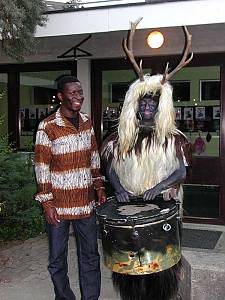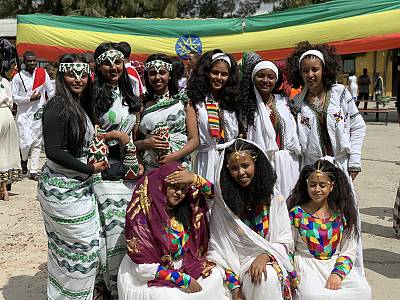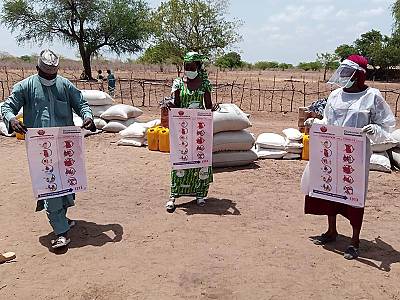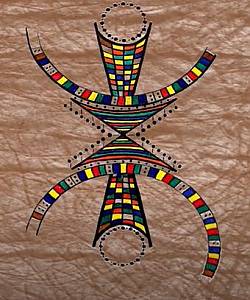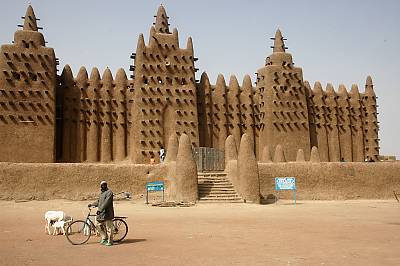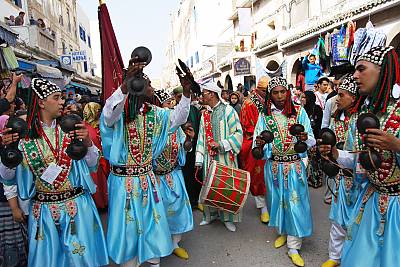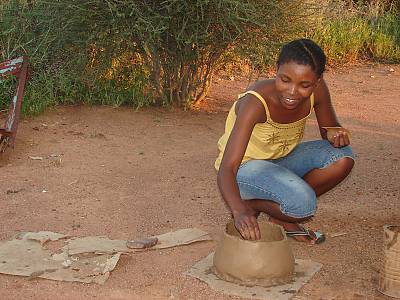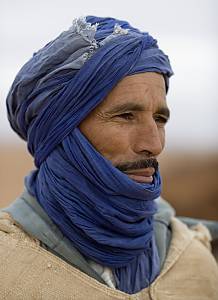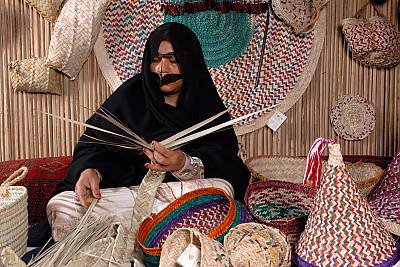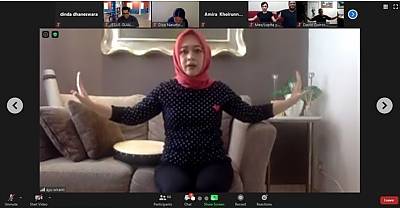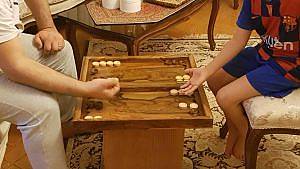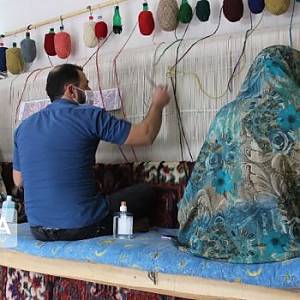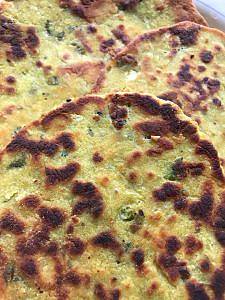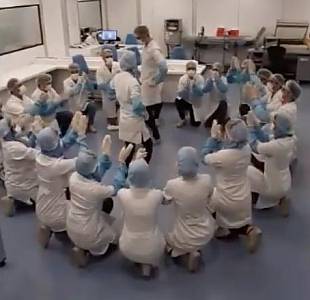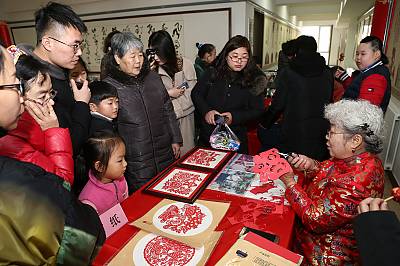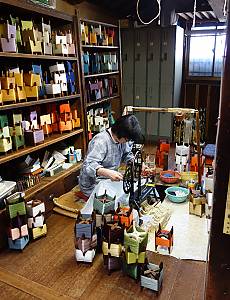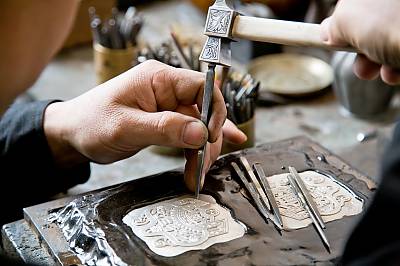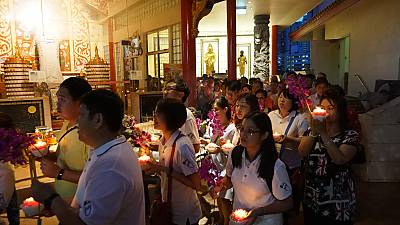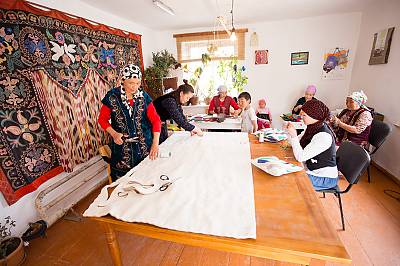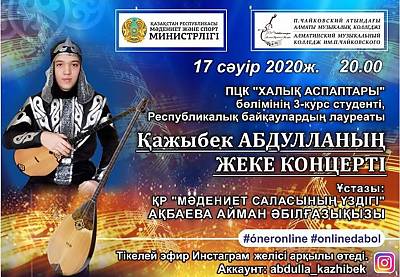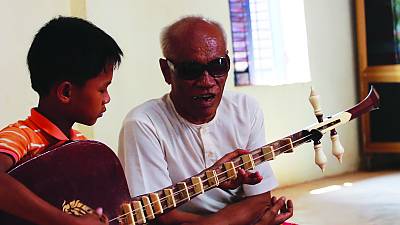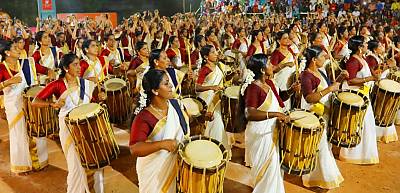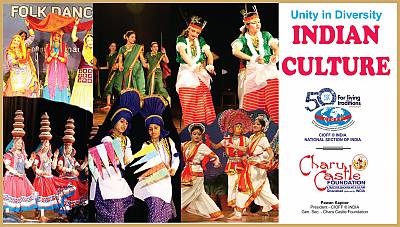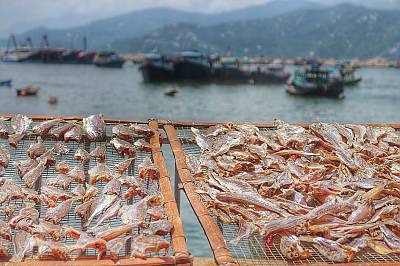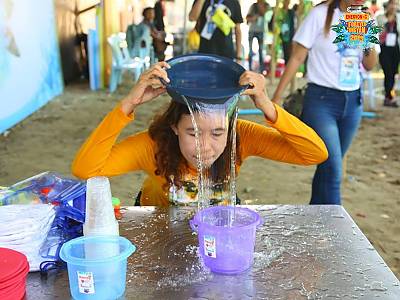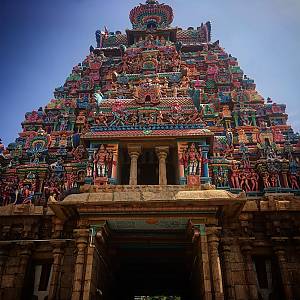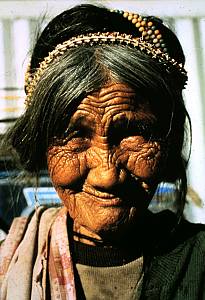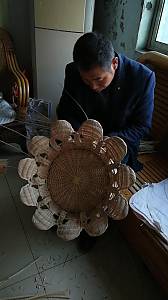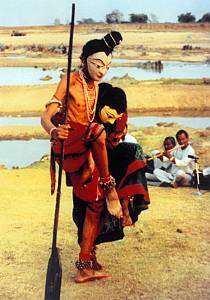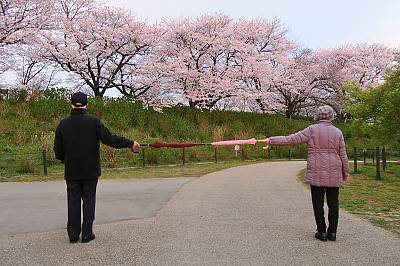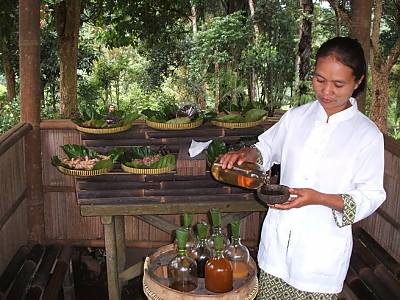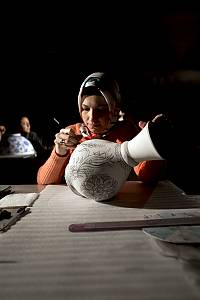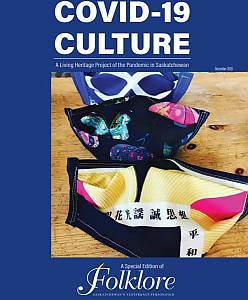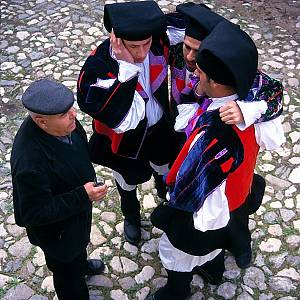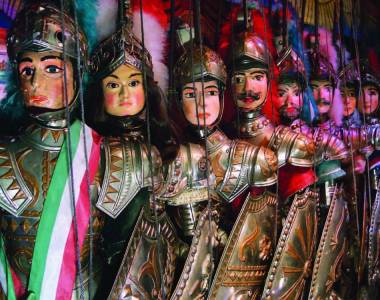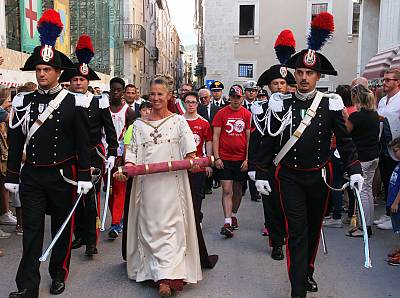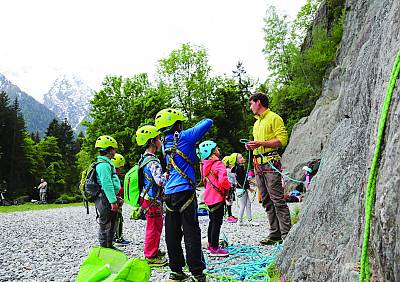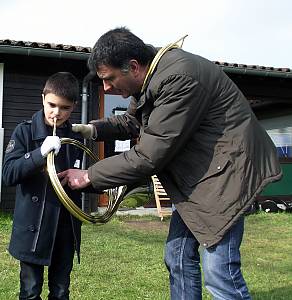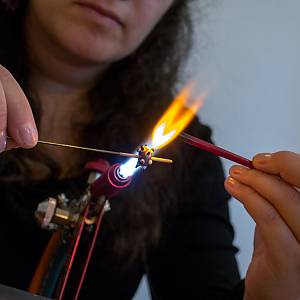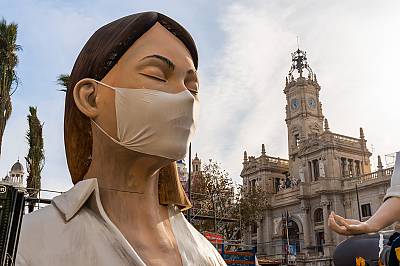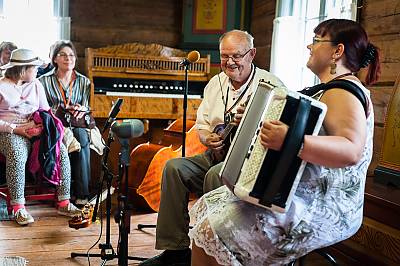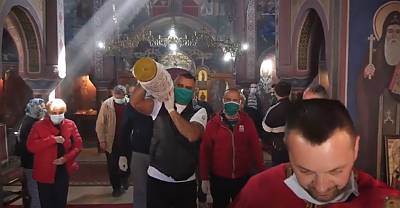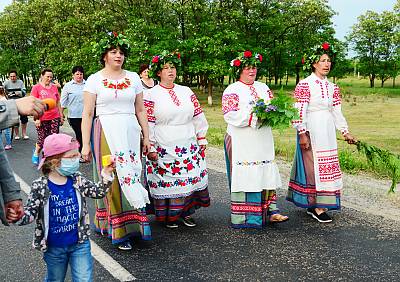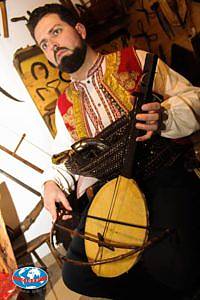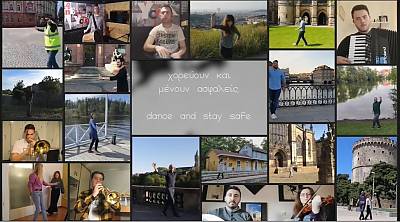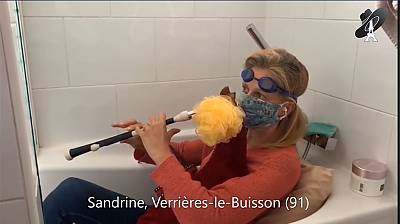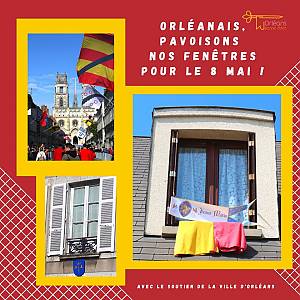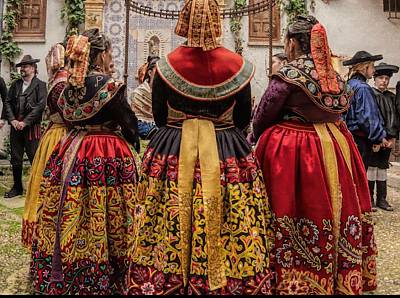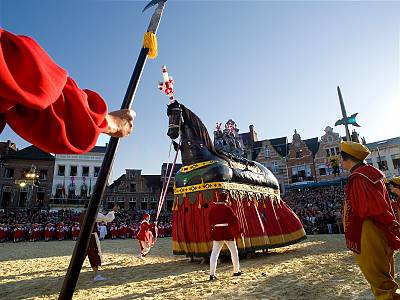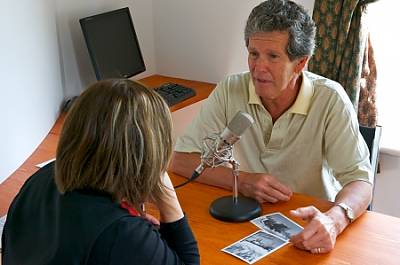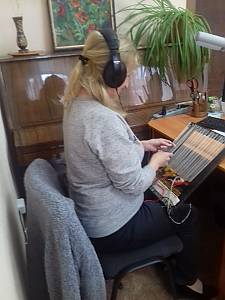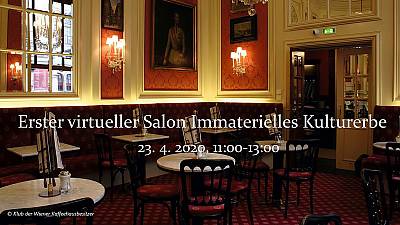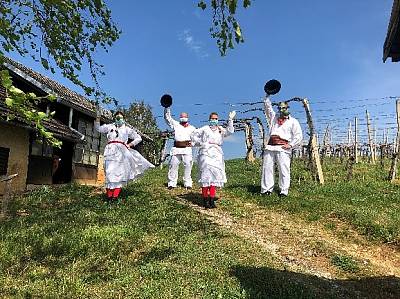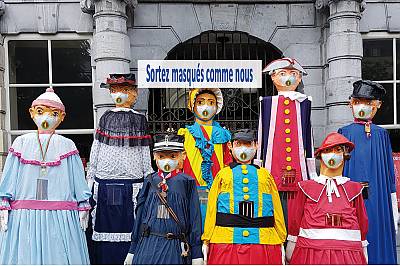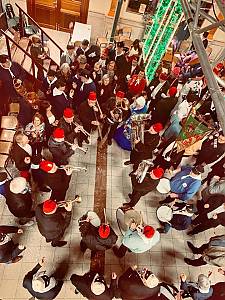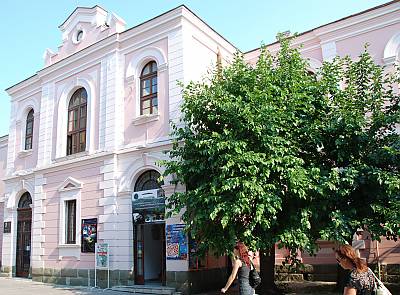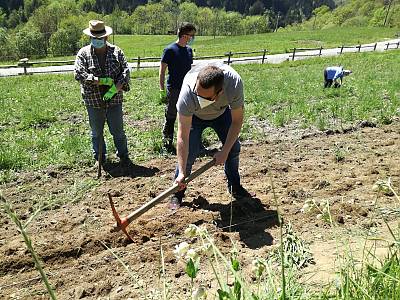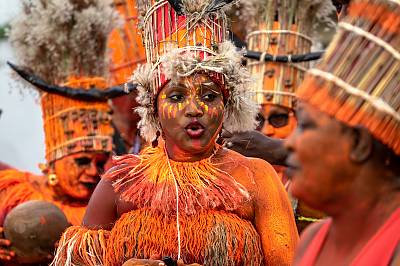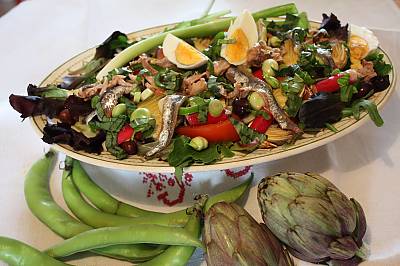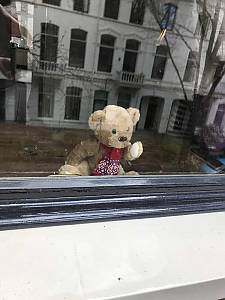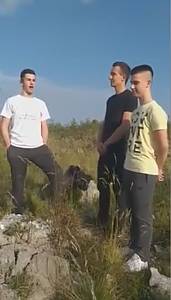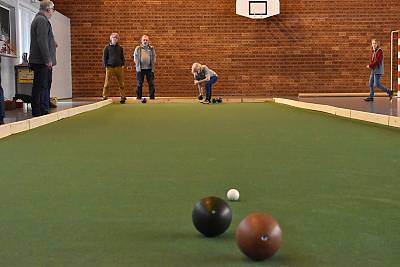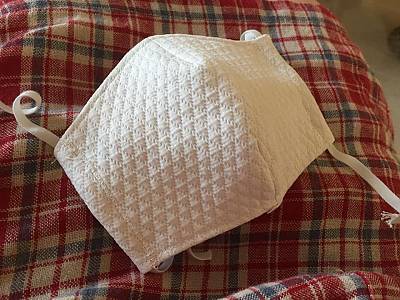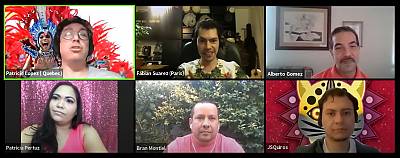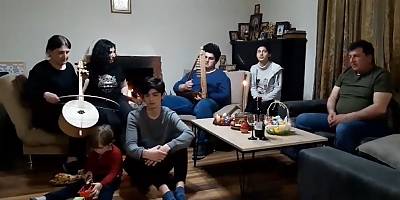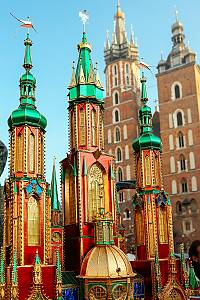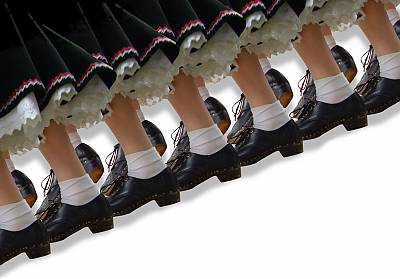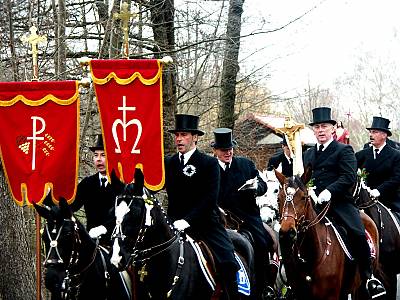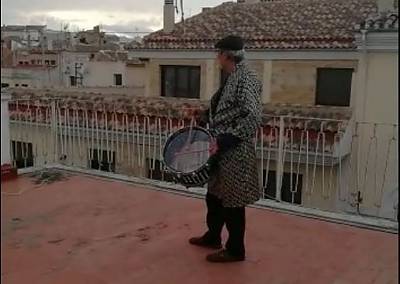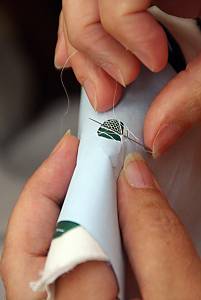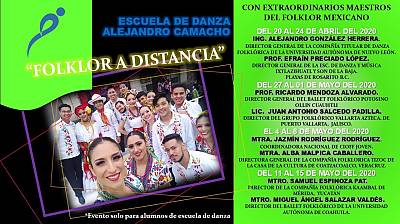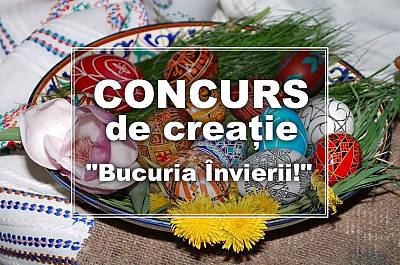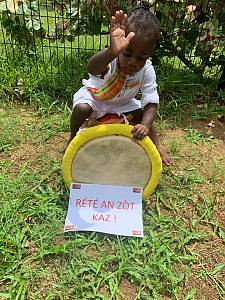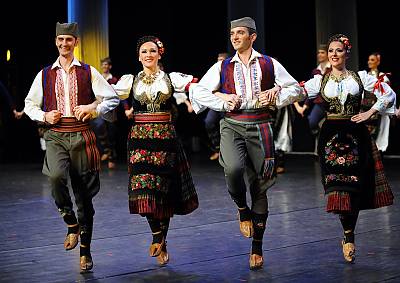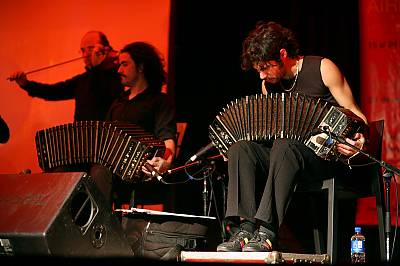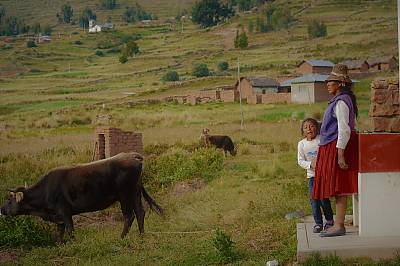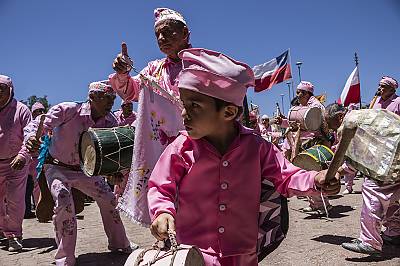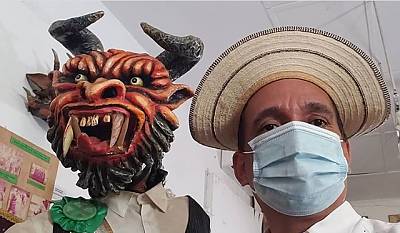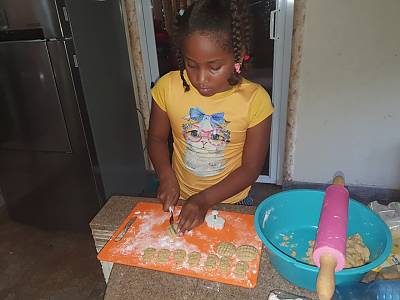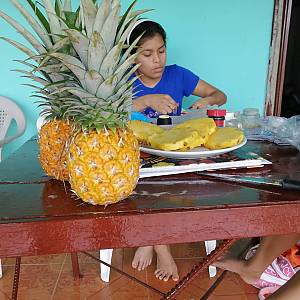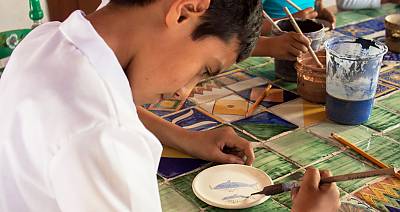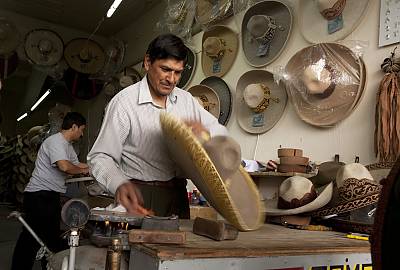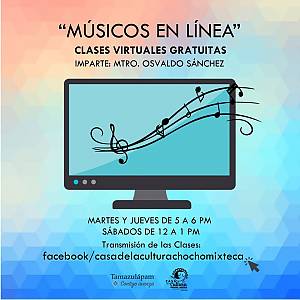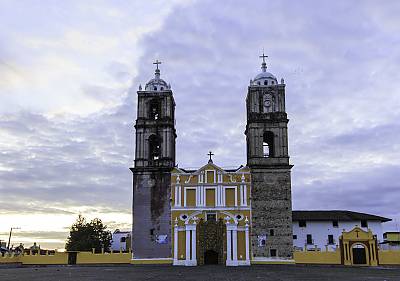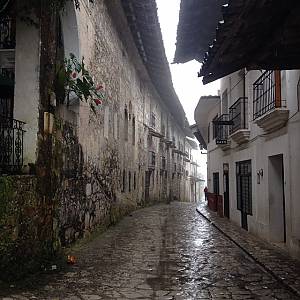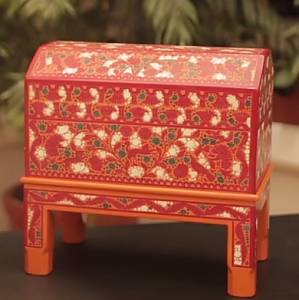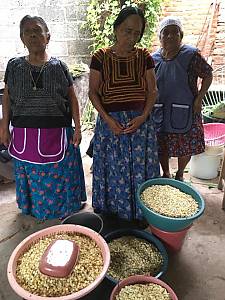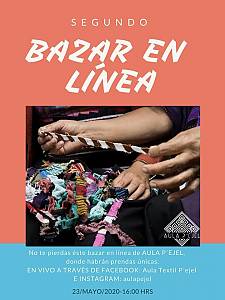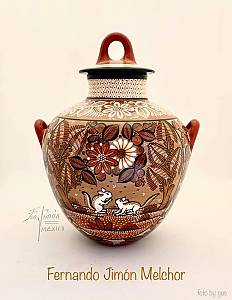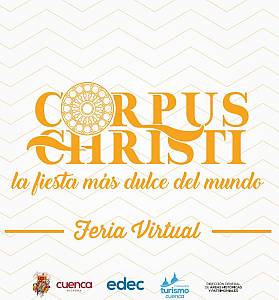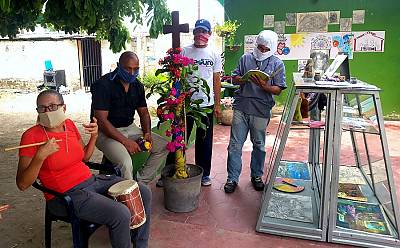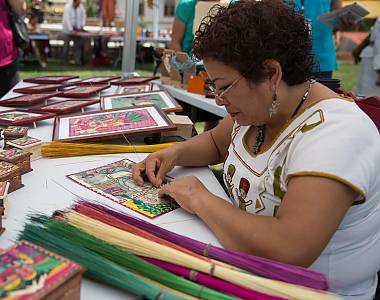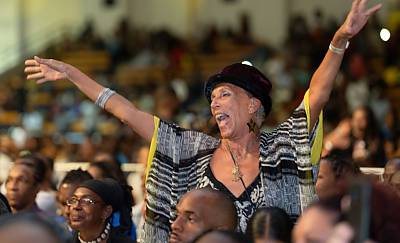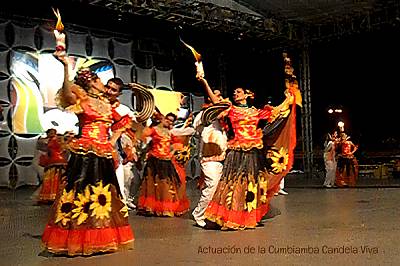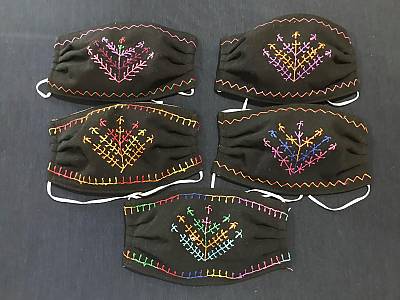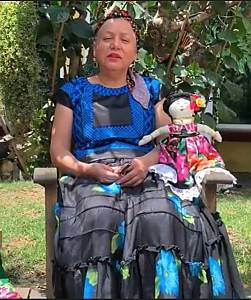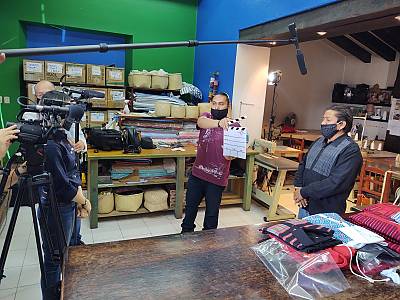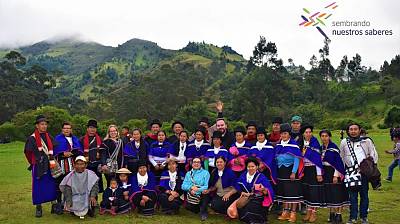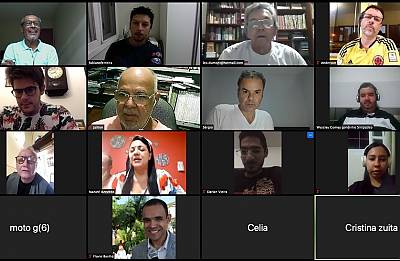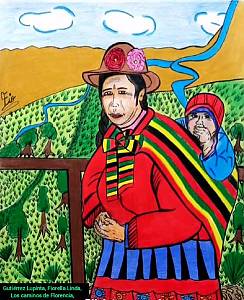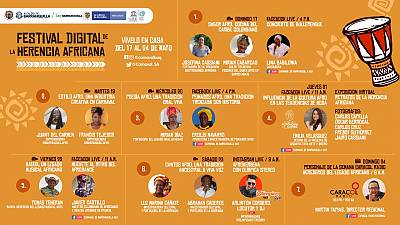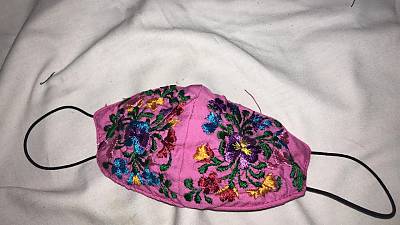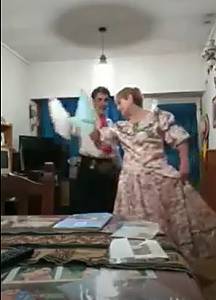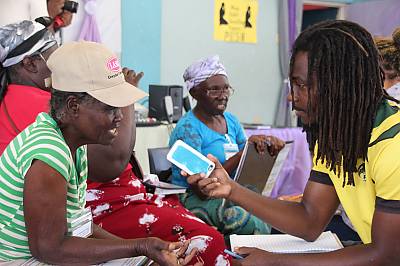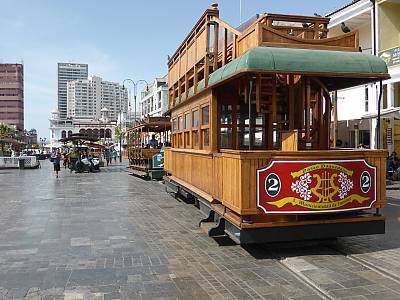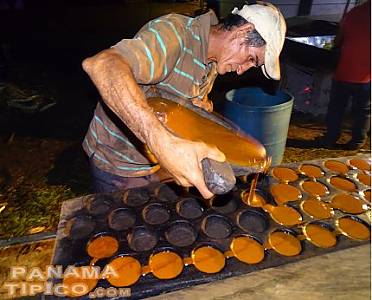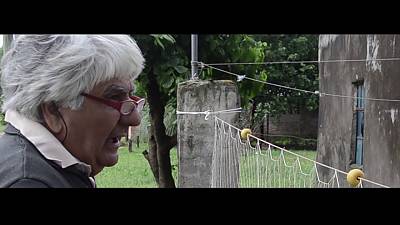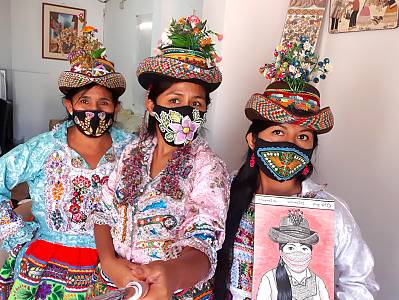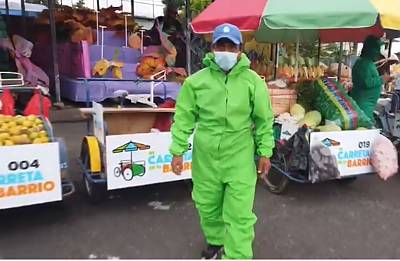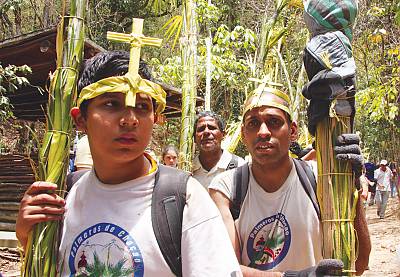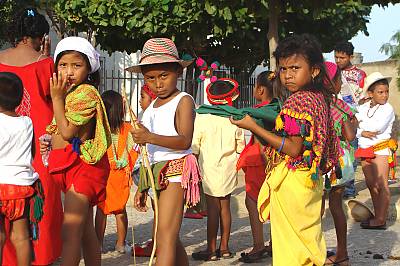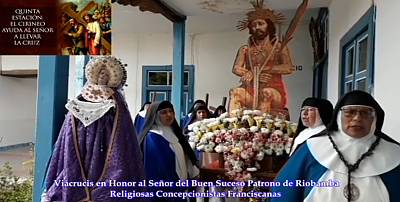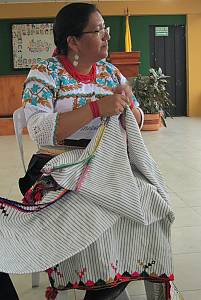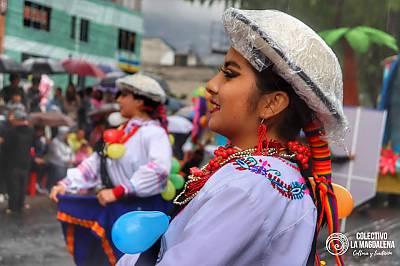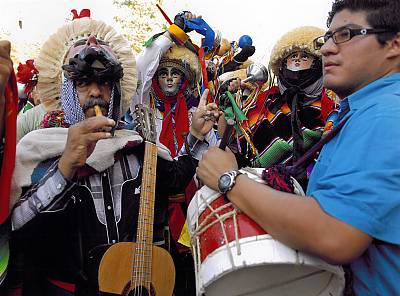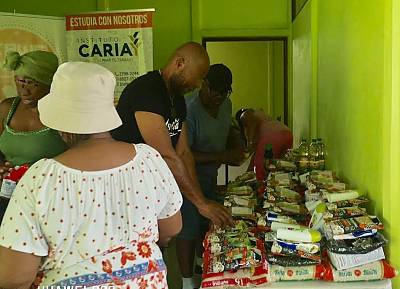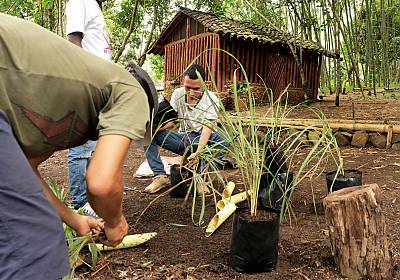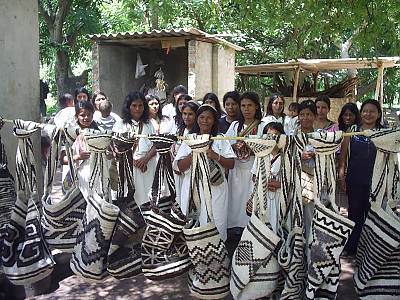SEKOU BERTE (Mali)
9 avril 2021
PRESENT DAY MALI AND THE CORONA VIRUS STRIKE 19
Brief overview on the Contextual Protecting Measures against Corona Virus 19 Strike
In Mali most people have yet to be able to read and write among grassroots communities, except in the towns of Djenne and Timbuktu. Moreover, while ignorance and addicted religious orientation makes it harder to challenge controversial and fanatic behavioral interpretations of any social phenomenon; awareness raising campaign relating to the Corona Virus 19 Strike becomes even more challenging.
People believe that Corona Virus 19 Strike speaks to pandemic virus manipulation under the politico-administrative control of the powers that be that are ruling ›››
VICTORIA PHIRI CHITUNGU (Zambie)
24 mars 2021
one year ago Covid 19 was declared a pandemic, and the people of Monze in Southern province, Zambia were advised like everybody else to seek immediate medical attention when the disease is suspected , keep social distance, avoid crowds, wear masks in public and wash their hands with soap and water, or use hand sanitizers to keep the pandemic away. For people in the rural areas of Monze such as Chivuna in Chikuni area, like in most rural areas of Zambia have found it difficult to observe these health guidelines because items such as hand sanitizers, soap and masks are not only ›››
Festival International de Conte du Togo FESCONTE (Togo)
10 septembre 2020
Depuis 16 ans, l’Ensemble Culturel les Griots Noirs du Togo en partenariat avec la Compagnie Belerrance de France, organise le Festival International de Conte du Togo FESCONTE sous la Direction artistique de ATTIDOKPO Koffi M. Mario, dans le but de sauvegarder, de pérenniser et de promouvoir le conte au Togo, en Afrique et dans le monde. Déjà avant 2004, il n’y avait pas un seul festival international de conte au Togo et “les soirs au village”, des pratiques sociales de référence endogènes qui permettaient de réunir une famille, des familles voire toute une communauté autour du feu et/ou sous l’ ›››
(Éthiopie)
14 août 2020
Festivals in Ethiopia are typically colorful and exciting. The country has cultural, religious, and other festivals that can attract foreign tourists and local participants to come and gather to watch the procession and take part. The most known name of which held every year in Amhara and Tigray States is Shadey, Ashendye, Solel, Mariya, which is the name for a tall grass that young women usually tie around their gowns as a type of decoration. The celebration days also herald the freedom of young women. It is a popular festival which reverberates the voice of young women loudly.
Culturally, Ashendiye ›››
Hindou Oumarou Ibrahim (Tchad)
10 août 2020
Hindou Oumarou Ibrahim is an indigenous woman from the Mbororo pastoralist community in Chad. She recently spoke with the Living Heritage Team in UNESCO’s Culture Sector about how her community is coping with the COVID-19 pandemic and its impact on their way of life.
How is the coronavirus pandemic affecting your community and its living heritage?
I am very scared for my community because we’re mainly pastoralists and we depend on the seasons. When it is the dry season, we migrate to other regions and sometimes to other countries – actually most of the time – then we come back to our region ›››
Hanan Ezzat / Paris 1 panthèon-Sorbonne Chercheuse (Égypte)
9 juin 2020
L’Égypte, un pays connu pour ses hauts lieux culturels, a été durement touchée par la crise du coronavirus, les sites ont été fermés depuis mi-mars, le nombre de touristes a atteint 0 %.
Dans ce contexte, le ministère du tourisme a lancé des visites virtuelles des tombes pharaoniques et des mosquées sur une plateforme numérique. En revanche, pour le patrimoine vivant, la situation était très critique puisque les festivals et les événements ont été annulés, ce qui a profondément affecté les communautés locales et autochtones qui vivent du tourisme et de l’événementiel.
Du fait de cette situation, depuis le début de la crise, nous avons consta ›››
Hassan AIT AISSA (Etudiant-chercheur et co-fondateur de Tiniẓṛi Art & Heritage) (Maroc)
19 mai 2020
En ces moments difficiles de pandémie, tout le monde est confiné chez lui. Du ce fait, les rencontres culturelles et les échanges entretenues entre les personnes n’a plus de place.
Et comme vous le saviez, dans les sociétés à tradition orale tout le monde appris de tout le monde. ce qui fait que cette opération d’enseignement-apprentissage est affectée.
En tant qu’équipe de jeune ayant l’esprit curieux de sauvegarder Notre patrimoine, condamné à l’oubli, culturel de la région de Dra-Tafilalta au Sud-Est du Maroc, nous avons sur le point de créer une association dédiée à la sauvegarde et à ›››
Rachid Ennassiri Co-fondateur de la plateforme Tiniẓṛi : Art & Heritage (Maroc)
17 mai 2020
Alors que la pandémie prend de l’ampleur dans le monde et que la peur et la terreur s’emparent des âmes, les deux groupes Marocains de la musique Amazigh Tawargit et Amnay ont usés de leurs instruments musicaux pour apaiser les esprits en ces temps de confinement, en diffusant une surprise de taille à leurs fans annonçant la sortie de leur nouvelle chanson duo entre les deux groupes intitulée « Atig n Tamunt ».
«Atig n Tamunt» qui veut dire la valeur de l’union est une chanson composée et écrite par les deux groupes ça fait 5 ans au sein du studio Tiwan Sound à ›››
Lassana Cisse (Mali)
7 mai 2020
Le patrimoine vivant a été affecté de plusieurs manières. Certaines pratiques immatérielles ont été affectées ou complètement mises aux arrêts (c’est le cas par exemple des pratiques communautaires cycliques d’entretien du patrimoine architectural en terre dont celles de Djenné et Tombouctou.
Les cérémonies rituelles (agraires et funéraires) et traditions des masques ne sont pas organisées comme d’habitude.
La pandémie à l’origine des distanciations physiques et sociales a créé le défi de “vivre autrement” en dehors du contexte socioculturel marqué par la solidarité, le vivre-ensemble et les rencontres inter et intracommunautaires indispensables, vu la perception locale de l’espace habité ›››
Ahmed Skounti, Institut national des sciences de l'archéologie et du patrimoine (UNESCO facilitator) (Maroc)
21 avril 2020
Morocco has been affected by the pandemic of Covid-19 since March 1st, 2020. Among other measures, a health emergency state has been decided. A confinement has been set up for one month since March 20 and now extended until May 20. This means that ICH activities have been cancelled or postponed.
These examples can be given :
1. The programme Sauvegarde et valorisation des savoirs et savoir-faire menacés de disparition et liés à l’artisanat has been suspended. Workshops on the inventory have been postponed. As I’m a facilitator for these workshops, I could not deliver this work for the moment (see link 1 below).
›››
Phuthadikobo Museum (Botswana)
11 avril 2020
Our organisation works closely with practitioners of living heritage. The practitioners deal with Earthenware Pottery Making Skills which was inscribed on the USL in 2012, while others are involved in Dikopelo Folk Music of Bakgatla ba Kgafela which was inscribed to the USL in 2017.
Both sets of practitioners are unable to practice their living heritage because of the State of Public Emergency which was declared by the President. The State of Public Emergency declared simultaneously with extreme social distancing, also known as lockdown. The lockdown has restricted movement of people and public gatherings as well as placing living heritage in non ›››
Lazhar Mohamed - Faculté des Langues, Arts et Sciences Humaines -Ait Melloul (Maroc)
10 avril 2020
La communauté berbère (amazighe) du Moyen Atlas marocain a renforcé sa résilience face à la pandémie en partageant des vers poétiques et des poèmes relatifs au COVID 19, dont on relate, d’une part, ce qui se passe dans le monde et au Maroc et dont on sensibilise les gens, d’autre part, à l’importance du confinement et de suivre les instructions des responsables et des médecins.
Ce qui soulage plus, c’est que chaqu’un veut devenir poète… en faisant des essais de poèsie. Etant donné qu’on ne peut pas être tous des poètes, les collègues disent de certains poèmes ›››
Hilda M. Sinywibulula, Zambia National Commission for UNESCO (Zambie)
10 avril 2020
The practice and transmission of this living heritage has been affected as a result of the COVID-19 restrictions/lock down.
A number of traditional ceremonies and festivals have been postponed/cancelled. The cancelled practices are those with fixed time frames and are only carried out during particular months of the year.
For instance, the Kuomboka ceremony which usually takes place in March or early April when the rivers are full or flooded will not take place this year. It has to wait for a new cycle of the year.
The issue of social distancing has affected other activities such as ›››
Les désignations employées et la présentation des textes et des documents référencés dans cette plateforme n'impliquent de la part de l'UNESCO aucune prise de position quant au statut juridique des pays, territoires, villes ou zones, ou de leurs autorités, ni quant au tracé de leurs frontières ou limites.
Department of Culture and Tourism - Abu Dhabi (Émirats arabes unis)
8 juin 2021
The living practice of heritage in any society is based on two basic pillars that contribute to its preservation and transmission from generation to generation, namely:
The broad participation of individuals, groups, and communities in this heritage, and the sustainability and continuity of its practice by adapting to crises and new circumstances in creative new ways.
While under normal circumstances the responsibility for sustaining the practice of heritage is both a societal and governmental responsibility, this responsibility takes on a newfound urgency and requires more work and commitment during troubled and unusual times.
In such times, maintaining and promoting a ›››
(Arabie saoudite)
14 août 2020
Muslims in Saudi Arabia on Wednesday began the annual hajj, a five-day pilgrimage taking place on a much smaller scale this year due to the coronavirus pandemic.
One of the five pillars of Islam, the hajj is a requirement able-bodied Muslims must perform at least once in their lifetime. Usually, more than 2 million people travel from around the world to take part, with huge crowds crammed into tiny religious sites. But this year only up to 10,000 people already residing in Saudi Arabia were allowed to attend.
“There are no security-related concerns in this pilgrimage, but (downsizing) is to protect pilgrims ›››
Ala’a Baroun, Observer from Kuweit (Koweït)
13 août 2020
We are living in a time where a pandemic has largely impacted our lives in an incredibly short period of time. The Covid-19 virus has been declared a health emergency at a global level ever as a dangerous and quick-spreading virus. Consequently, several safety measures were taken by countries to contain and slow down the spreading of the virus. Those measures include limiting and hindering the following social interactions: gatherings, work, public events etc.. in aim to avoid crowds and direct contact between people.
It’s critical for us to understand what is happening to our cultural heritage nowadays; both tangible a ›››
Hanan Ezzat / Paris 1 panthèon-Sorbonne Chercheuse (Égypte)
9 juin 2020
L’Égypte, un pays connu pour ses hauts lieux culturels, a été durement touchée par la crise du coronavirus, les sites ont été fermés depuis mi-mars, le nombre de touristes a atteint 0 %.
Dans ce contexte, le ministère du tourisme a lancé des visites virtuelles des tombes pharaoniques et des mosquées sur une plateforme numérique. En revanche, pour le patrimoine vivant, la situation était très critique puisque les festivals et les événements ont été annulés, ce qui a profondément affecté les communautés locales et autochtones qui vivent du tourisme et de l’événementiel.
Du fait de cette situation, depuis le début de la crise, nous avons consta ›››
Hassan AIT AISSA (Etudiant-chercheur et co-fondateur de Tiniẓṛi Art & Heritage) (Maroc)
19 mai 2020
En ces moments difficiles de pandémie, tout le monde est confiné chez lui. Du ce fait, les rencontres culturelles et les échanges entretenues entre les personnes n’a plus de place.
Et comme vous le saviez, dans les sociétés à tradition orale tout le monde appris de tout le monde. ce qui fait que cette opération d’enseignement-apprentissage est affectée.
En tant qu’équipe de jeune ayant l’esprit curieux de sauvegarder Notre patrimoine, condamné à l’oubli, culturel de la région de Dra-Tafilalta au Sud-Est du Maroc, nous avons sur le point de créer une association dédiée à la sauvegarde et à ›››
Rachid Ennassiri Co-fondateur de la plateforme Tiniẓṛi : Art & Heritage (Maroc)
17 mai 2020
Alors que la pandémie prend de l’ampleur dans le monde et que la peur et la terreur s’emparent des âmes, les deux groupes Marocains de la musique Amazigh Tawargit et Amnay ont usés de leurs instruments musicaux pour apaiser les esprits en ces temps de confinement, en diffusant une surprise de taille à leurs fans annonçant la sortie de leur nouvelle chanson duo entre les deux groupes intitulée « Atig n Tamunt ».
«Atig n Tamunt» qui veut dire la valeur de l’union est une chanson composée et écrite par les deux groupes ça fait 5 ans au sein du studio Tiwan Sound à ›››
Hamza Osama Aqrabawi / Hakaya Organization (État de Palestine)
7 mai 2020
First: Effects on our living heritage
As a result of the state of emergency announcement and the disruption of the normal life’s wheel after the 5th of March 2020, with the tightening of measures on gatherings and the movement of people, many Palestinian habits and practices has been changed, including:
1/Marriage and weddings: weddings, including folk celebrations, as well as women’s group parties to celebrate marriage (Hennah Parties), large weddings’ suppers that were old customs in societies, as well as the groom’s (Zaffeh) and the bride’s (Fardeh) traditions. Now weddings are held silently and on a small scale.
2/Death: The customs ›››
Elyse Tonna - Gabriel Caruana Foundation and ACT (Malta) (Malte)
30 avril 2020
Due to lockdown and physical distancing measures, living heritage has been greatly impacted. The Gabriel Caruana Foundation, where I work as a Curator and Co-creative director, operates and runs a contemporary artistic programme from a 300-year old Schedule 1 windmill in Birkirkara. It was converted into an Arts, Crafts and Cultural Centre by the late Gabriel Caruana, one of the pioneers of local modernist art and ceramics in 1990.
Together with my colleague Raffaella Zammit (Co-Creative Director and Programme Manager), we were preparing to celebrate The Mill’s 30th anniversary and its legacy on the 22nd of June. Although we might not ›››
Ahmed Skounti, Institut national des sciences de l'archéologie et du patrimoine (UNESCO facilitator) (Maroc)
21 avril 2020
Morocco has been affected by the pandemic of Covid-19 since March 1st, 2020. Among other measures, a health emergency state has been decided. A confinement has been set up for one month since March 20 and now extended until May 20. This means that ICH activities have been cancelled or postponed.
These examples can be given :
1. The programme Sauvegarde et valorisation des savoirs et savoir-faire menacés de disparition et liés à l’artisanat has been suspended. Workshops on the inventory have been postponed. As I’m a facilitator for these workshops, I could not deliver this work for the moment (see link 1 below).
›››
TEHRAN ICH Centre (Liban)
15 avril 2020
Due to the COVID-19 global pandemic and in line with its duties regarding the intangible cultural heritage, the Regional Research Centre for Safeguarding Intangible Cultural Heritage in West and Central Asia, under the Auspices of UNESCO (Tehran ICH Centre) has created its first virtual photo exhibition to show a number of selected photos showing diverse manifestations of the ICH within the Central and West Asia.
Visit the online exhibition
For ease of accessibility, it would be better to use these two browsers: Google Chrome and Firefox.
›››
Lazhar Mohamed - Faculté des Langues, Arts et Sciences Humaines -Ait Melloul (Maroc)
10 avril 2020
La communauté berbère (amazighe) du Moyen Atlas marocain a renforcé sa résilience face à la pandémie en partageant des vers poétiques et des poèmes relatifs au COVID 19, dont on relate, d’une part, ce qui se passe dans le monde et au Maroc et dont on sensibilise les gens, d’autre part, à l’importance du confinement et de suivre les instructions des responsables et des médecins.
Ce qui soulage plus, c’est que chaqu’un veut devenir poète… en faisant des essais de poèsie. Etant donné qu’on ne peut pas être tous des poètes, les collègues disent de certains poèmes ›››
Annie Tohmé Tabet, UNESCO Facilitator (Liban)
6 avril 2020
Au Liban, les mesures de confinement ont été prises début mars 2020. Les écoles et les universités ont été fermées puis le reste des autres secteurs. Cette période est, pour les communautés chrétiennes dont je fais partie, consacrée au jeûne précédant la période de Pâques. Tous les rituels religieux exigeant des rassemblements publics ont été progressivement annulés. Ils ont été remplacés par des célébrations quotidiennes transmises à la TV. Avant cette annulation, il y a eu un débat autour de la communion et ses modalités durant les messes dans les églises. Tous les rituels religieux, les processions et les rituels sociaux (comme les rassemblement fam ›››
Les désignations employées et la présentation des textes et des documents référencés dans cette plateforme n'impliquent de la part de l'UNESCO aucune prise de position quant au statut juridique des pays, territoires, villes ou zones, ou de leurs autorités, ni quant au tracé de leurs frontières ou limites.
Selina Ching Chan (Hong Kong Shue Yan University) (Chine)
16 mai 2021
Due to the Covid-19 pandemic in 2020, all kinds of public gatherings were suspended in Hong Kong. All the traditional celebrations of the Chaozhou Hungry Ghosts (Yulan) Festival - Hong Kong’s ICH, and China’s national-level ICH - in the conventional public spaces were cancelled because the government forbade crowd gatherings and refused to release these sports grounds for the festival. Chaozhou operas were abandoned due to crowd control and travel restrictions on performers from Mainland China. Similarly, there was also a shortage on religious specialists for rituals because they were mostly from Mainland China.
In the pandemic, organizers at different districts tried very har ›››
CIOFF INDONESIA SECTION (Indonésie)
22 mars 2021
They said it was Covid-19 birthday, but instead, we say it is our day to adapt and rise.
Been a year since Covid-19 entered our life in Indonesia, at first, true we were panicked, scared, and overwhelmed with what we see, feel, hear, from the news and the fact it is also impacted our families here at CIOFF® Indonesia. We lost our big families, friends, teachers, parents, etc, but we do comeback stronger, healthier, each passing day. We began to adapt more to live based on health protocols, do many events national and internationally by online, we limit our offline ›››
Cultural Research Foundation (Türkiye)
11 janvier 2021
We, as a non-governmental organization accredited to provide advisory services to the Committee, within the framework of UNESCO ICH Convention, carry out works titled “Handicrafts Research Program” along with other research works. We review the tradition of handicrafts under basic titles like the raw materials and tools used; production methods and oral knowledge and skills transmitted through generations. The craftspeople who carry out knowledge-experience, production and cultural transmission process in their fields, have a special place within our works as the important bearers of this tradition. With this approach, the book titled “My Art Story” which includes artists’ stories through their o ›››
Haeree Shim / ICHCAP (International Information and Networking Centre for Intangible Cultural Heritage in the Asia-Pacific Region under the auspices of UNESCO (République de Corée)
24 juin 2020
Although various intangible heritage events and education programs have been canceled, many other projects have been converted into online projects and have begun to pioneer new grounds for the safeguarding and promotion of intangible heritage.
Since the end of April, the National Intangible Heritage Center has been conducting its educational curriculum for new intangible heritage trainees through online classes, whereas it had previously taken place in person.
Educational videos for trainees consist of four 25-minute videos each in a total of 15 subjects, where new trainees are required to watch all of the educational videos and submit their impressions and questions ›››
National heritage board, festival and precinct development division (Singapour)
23 juin 2020
We have used our annual signature heritage festival to showcase living heritage practices online, through many different ways, video demonstrations (especially for food related living heritage), photo essays, podcasts.
For many of the practitioners, they have not gone digital before so for many of them, this was a first for them as well.
It has helped a number of them get more publicity and business during the pandemic time, gaining new audiences and customers, which has helped them be a bit more sustainable. ›››
CIOFF®️ Indonesia (Indonésie)
22 juin 2020
During this quarantine period, CIOFF®️ Indonesia adapted and shifted its activities in promoting culture.
It hosted a virtual class for youth and the public across continents to learn the Saman Dance, inscribed by Indonesia on the List of Intangible Cultural Heritage in Need of Urgent Safeguarding.
By being at home, it doesn’t mean we can’t spread our culture to others. This workshop is a three-day workshop initiated by CIOFF®️ Mexico, and CIOFF®️ Indonesia joined as one of the facilitators, with more than 70 persons from Latin America becoming students.
Regardless of the time differences, with the help of technology, the workshop w ›››
UNESCO Chair on Intangible Cultural Heritage in Formal and Informal Education (Ankara Hacı Bayram Veli University) (Türkiye)
19 juin 2020
We provided online classes on subjects related to UNESCO and intangible cultural heritage at graduate level (both phd and masters) at our university.
The Chair put academic support behind the “Intangible Cultural Heritage Online Summer School” to be organized by Turkish National Commission for UNESCO and Institute for Intangible Cultural Heritage (accredited NGO) on June 29-July 5, 2020.
This meeting may be a good opportunity to extend the reach of ICH-related research and applications and may serve as a platform to bring other related disciplines closer together.
Besides, the Summer School also focuses on the sustainable development goals and safeguarding ICH in eme ›››
China Folklore Society (Chine)
17 juin 2020
Aken Aytes, or Aken Singing, is a folk performing art popular among the Kazakh ethnic group. The performer is also called an Aken, which means “poet” in Kazakh, as the lyrics are always beautiful, humorous or inspiring.
During the performance of Aken Singing, the performer usually improvises a song while playing the tamboura. Being an Aken is a challenging job as the art is usually performed in a sing-off, where two Akens exchange lyrics in an antiphonal style.
To have the best performance, an Aken must have a rich knowledge of culture, history, and even the latest government policies. Therefore ›››
Persian Garden Institute for Living Heritage (Iran (République islamique d’))
2 juin 2020
According to many Iranians living abroad, the recent quarantine and lockdown conditions have provided a good opportunity for family units to be together - one of its interesting effects in this regard has been the full-time presence of parents with their children and their conversations conducted in their mother tongue.
They believe that their full-time presence at home and spending time with their children, speaking Persian, and reading stories and lullabies of their mother tongue is very effective for improving children’s understanding and progress in learning their mother language and that the positive effect of this short-term period is much greater t ›››
Persian Garden Institute for Living Heritage (Iran (République islamique d’))
2 juin 2020
A considerable portion of the material manifestations of Iran’s living heritage is bound within limited social groups, mostly at the family or small workshop levels, and these seem to be relatively unaffected by COVID-19.
At the family level, one witnesses family craftsmanship workshops for carpet-weaving, traditional embroidery, wood-work, jewellery making, pottery, etc. Many Iranian artists also work either individually or at the family level. These individual-, family- and workshop-based handicrafts and artistic outputs have a great potential to serve as a vital social and economic resource for these families and small businesses during the COVID-19 pandemic and in the post-virus r ›››
Persian Garden Institute for Living Heritage (Iran (République islamique d’))
2 juin 2020
Religious practices and rituals are one of the backbones of traditional culture in Iran. For example, Iran hosts many pilgrimage sites, both Islamic and belonging to other religions including Zoroastrianism, Judaism and Christianity.
Each year, these sites attract millions of Iranian and foreign pilgrims, to the extent that religious tourism is a major sector of the Iranian tourism industry. Many religious rituals in Iran are performed publicly and on a daily, weekly, or yearly basis.
These include (among Islamic rituals and practices) daily public prayers in mosques; mourning ceremonies for the 3rd, 7th, and 40th days after a death; widespread ›››
Persian Garden Institute for Living Heritage (Iran (République islamique d’))
2 juin 2020
In the field of foodstuffs and cooking, Iranians are witnessing the return of traditional dishes; people are even involved in training and learning the respective cooking and preparation methods of dishes from the Qajar era (18th and 19th centuries) which constitute a theme on Instagram’s cooking pages these days; a book of this title has also recently been published.
In addition, baking traditional Iranian pastries and breads has become very common, including lavash, taftoon and sangak flatbreads, etc., each one having a different name in different parts of Iran. Baking bread at home, in addition to its entertainment and ›››
Persian Garden Institute for Living Heritage (Iran (République islamique d’))
2 juin 2020
In view of Iran’s legislative context, usually only performances of certain traditional, regional dances are possible in either traditional local gatherings, and as parts of major national festivals or arts events.
Like many other nations, ethnic Iranians regard their dances as a manifestation of happiness, group identity, and social solidarity; many Iranian rural, communal, and urban communities are known for their dances.
Interestingly, the COVID-19 pandemic has provided Iranian dance traditions with new meanings; for the past few months, Iranians have begun to dance to consolidate their will in happy gatherings to reaffirm their common goal of persistence in this d ›››
Persian Garden Institute for Living Heritage (Iran (République islamique d’))
2 juin 2020
The outbreak of the pandemic in Iran was simultaneous with people’s getting prepared for the biggest national event, i.e. Nowrouz, the Persian New Year Festival.
In contrast with its usual routine, this year (Year 1399 on the Iranian calendar) Nowrouz was held in a very different manner from normal times, with some of its elements having been completely removed. Iranians always welcome Nowrouz from one month before the new year time (21 March) by making preparations such as Spring cleaning known as xāne tekāni (Persian: خانهتکانی), buying new clothes and equipment, and preparing special foodstuffs such as sweets, dried fruits, and nuts.
T ›››
China Folklore Society (Chine)
29 mai 2020
The COVID-19 pandemic is a war between human beings and the virus. According to the current UNESCO survey over all continents, the responses collected so far have shown that the intangible cultural heritage is being affected globally, with so many diversified forms.
For instance, many festive events and celebrations related to the intangible cultural heritage were restricted or disrupted due to the temporary lockdown policy that had been widely applied in many countries.
In China, to curb the spread of the novel coronavirus, the Government rolled out a host of unprecedented moves, including extending the Spring Festival holiday, postponing the ›››
China Folklore Society (Chine)
29 mai 2020
Since the outbreak of the novel coronavirus, the Center for Chinese Incense Culture (CCIC, subsidiary to China Folklore Society) organized relevant bearers, practitioners and experts to explore the possibility using the wisdom of ICH to cope with the spread of the virus.
According to the Traditional Chinese Medicine, certain formulas of incense have the function of sterilization and could strengthen people’s immune system.
Having examined over one hundred formulas or prescriptions of incense making, three prescriptions were selected to make herbal sachets to assist the existing epidemic prevention methods.
As the competent body of the ICH element, the Craftmanship of H ›››
China Folklore Society (Chine)
29 mai 2020
Faced with the expected epidemic, the Qingdao Municipal ICH Safeguarding Center (QMISC) adjusted its working strategies in time and mobilized all ICH stakeholders in the city to take active actions to fight the virus.
In the campaign, both online and offline methods were adopted, for the dissemination of anti-epidemic measures, providing social services for individuals and companies, and organizing exhibitions of ICH elements.
Through these activities, the ICH stakeholders had shown their responsibilities to serve the people, benefit the community and reward the country.
For instance, on January 18, when the launching ceremony of the “Living Heritage Month” was initiated, the QMI ›››
Tamiko Tamura / NGO for Project of maintenance of quality of stage tools for the Japanese performing arts (Japon)
24 mai 2020
The Covid-19 pandemic has had a significant negative impact on Japanese traditional stage performances, including the professionals who make the stage tools necessary for these performances. Indeed, these traditional important performances, such as Noh, Kyogen, Kabuki and Bunraku became increasingly canceled or postponed since late February 2020, with most of them stopped by the beginning of May 2020.
Most of theatres were closed, and as a consequence, traditional music players and performers have not had any income. Corresponding to this, those who make various stage tools and performers’ costumes have no more work, and they are also in the same economic difficulties.
›››
Renjie Zhang (Chine)
23 mai 2020
Living heritage transmission after the COVID-19-pandemic
During the COVID-19 epidemic, the Chinese government issued strict quarantine regulations to make people stay at home. During the quarantine, most people got information online.They also produced many short videos for entertainment. During this period, we can see that intergenerational interactions are more frequent so that the activeness of young people in the online space affects inheritors, resulting in the improvement of the information literacy of them. Some heirs began to learn to use apps, and gradually expanded the publicity of living heritage to online space.
Jiaocheng, a thousand year old city ›››
National Heritage Board (Singapour)
23 mai 2020
The COVID-19 pandemic has impacted the way living heritage practices in Singapore are carried out by the community. The implementation of safe-distancing measures and the subsequent suspension of large gatherings has meant that various social practices, rituals and festive events in the months of March to May 2020 had to be either cancelled, carried out within the confines of households or observed via online platforms such as video streaming services.
The community has shown resilience in adapting to the situation to continue their practices, and further highlights the important role that ICH plays in keeping communities together during challenging times. The ›››
National Commission of the Kyrgyz Republic for UNESCO (Kirghizistan)
18 mai 2020
Traditionally sacred sites and pilgrimage practices have always included praying for Mother Earth, people and animals, as well as spiritual offerings for ancestor spirits and guardians, especially during calamities.
During these difficult times for the whole humanity related to the spread of COVID-19, Aigine Cultural Research Center together with the network of traditional practitioners and sacred site guardians have been organizing praying sessions and conducting individual offering rituals by continuing the ancient traditions.
The words of wisdom, support and praying for the wellbeing of humanity by our practitioners came from different corners of the Kyrgyz Republic in a form of ›››
National Commission of the Kyrgyz Republic for UNESCO (Kirghizistan)
18 mai 2020
The scale of the pandemic has impacted the practice and transmission of crafts in the Kyrgyz Republic. A number of projects, as well as exhibitions and master classes have been canceled.
At the same time, Kyrgyz craftswomen are finding ways to support their creative sector during the coronavirus lockdown. Craftswomen are demonstrating that it is still possible to promote and practice the cultural heritage during the pandemic, when it is forbidden to socialize and move around.
Craftswomen of Shyrdak and Ala Kiyiz, the art of Kyrgyz traditional felt carpets promoting online trainings and networking events for free. Ala-kiyiz and Shyrdak ›››
National Commission of the Kyrgyz Republic for UNESCO (Kirghizistan)
17 mai 2020
The practice of the living heritage is affected as a result of the COVID-19 pandemic. The Government of the Kyrgyz Republic introduced a state of emergency to stop the danger of the spread of COVID-19, which has restrained the possibility of people to assemble, perform and transmit their heritage.
A number of ICH activities have been canceled or suspended in ICH communities. Nonetheless, living heritage is practiced constantly by concerned communities and urges people to unite and be patient during this challenging pandemic. For instance, the Kyrgyz epic trilogy: Manas, Semetey, Seytek are the immortal spirit and basic identity of ›››
Dr. Evfrat B. Imambek, Member of Qazaqstan National Committee for ICH (Kazakhstan)
15 mai 2020
The coronavirus pandemic (COVID-19) has severely affected Kazakhstan, located at the intersection of many transport corridors between East and West, North and South. Protective measures began to be applied almost immediately, but from March 16, 2020, President Kassym-Jomart Tokayev was forced to introduce a state of emergency in the country.
The strict self-isolation regime was a serious blow to the living heritage of the Kazakh people: after all, the celebration of Nauryz, included in the ICH Representative List, begins in Kazakhstan on March 14 with the Körisu tradition, which consists in visiting parents and friends in order to find out about their health ›››
Alena Murang / Kanid Studio (Malaisie)
15 mai 2020
For myself as an artist and I know for other cultural heritage artists, such as my teacher and some elders, we had several overseas shows cancelled.
For us, international shows are one way of keeping our heritage alive, and also showing the younger generation that our cultural heritage has relevance.
My band and I have been doing live shows on Facebook and Instagram - “Sape’ sound baths ” - as our music is used for healing. We are also currently planning to produce a music video for harvest festival (1 June) which has been “Cancelled”. The video will feature about nine endangered / threaded Dayak ›››
National Center for Cultural Heritage (Mongolie)
15 mai 2020
Practitioners of the living heritage in Mongolia have been affected differently in this situation. Since January 2020, the Government of Mongolia has taken effective measurements against Covid-19 and the situation related to Covid-19 is under the control.
Living heritage and its practitioners in Mongolia have been affected differently in the influence of Covid-19, depending on the domains. Most affected living heritage and practitioners are from domains of folk performing art, social rituals, practices, and festive events and traditional craftsmanship, and in reverse, the domain knowledge and practices concerning nature and universe and oral traditions less affected.
In relation to the situation ›››
National Center for Cultural Heritage (Mongolie)
15 mai 2020
The unforgettable cultural heritage of the nomadic Mongols, which has long been developed, transmitted and inherited over generations is the art of needlework.
The art of needlework is a result of a great deal of meticulous labor, delicacy, patience, and perception of intellect, hands and eyes at the same time.
The traditional art of needlework consists of general techniques, such as sewing, stitching, quilting, sewing with a forward stitch, single or double stitch and hemming stitch, and more than 20 forms of decorative embroideries, including chain stitch, double-embroidery stitch, herring-bone stitch, satin stitch and needle round stitch etc.
During this ongoing ›››
(Cambodge)
13 mai 2020
In Cambodia, intangible cultural heritage is deployed for the transmission of important public health messages. One of the traditional functions of Chapei Dang Veng artists in Cambodian society is to convey important news and information to the community. Today, Master Kong Nay honors this tradition, while amplifying his reach through social media.
The 75 year old Master Kong Nay, one of the rare great masters of the Chapei Dang Veng, sings about hand-washing and social distancing and other COVID-19 safety tips.
In 2016 the UNESCO Intergovernmental Committee for the Safeguarding of the Intangible Cultural Heritage approved the granting of financial assistance totalling ›››
Folkland (Inde)
12 mai 2020
The living heritage of my place has been seriously affected as we are in the time of festivals. Folk performers, ritual dancers, theatre artists, dancers, people working in the handicraft sector etc. have all been seriously affected by the lockdown. This includes stage artists, dance school teachers, make up artists, costume rental people, pageantry artists, wedding dancers, musicians, both classical and folk, and tribal artists who have lost their income.
In my area (Kerala state), we have a long monsoon here. The festival season starts in the last week of October and the artists usually run programmes until the first ›››
Pawan Kapoor CIOFF(R) India and Charu Castle Foundation (India) (Inde)
11 mai 2020
The culture and arts sector has been one of the most affected by measures all over the world in this Covid 19 epidemic. The effects of Covid-19 are having a devastating impact on health services around the world. Beyond the immediate threat to life, livelihoods and the economy are also affected.
COVID-19 is also laying waste to the cultural schedule, forcing cancellations and suspensions of some of the biggest cultural events organized all across the nation, serving as a medium for education, promotion platform and transfusion of heritage from one to another – Artists to Audience and Guru to Learner (Teacher to S ›››
Ajoka Theatre (Pakistan)
10 mai 2020
The coronavirus pandemic and lockdown has badly affected our ability for live interaction with our audience and our training courses (in acting, writing, anchoring etc). We have always highlighted our cultural and artistic heritage through our performances.
We have now started exploring the potential of social media for online classes, performances and festivals. The response so far has been very good, even surprising.
However adapting to social media for an ancient community-oriented performing art is quite a challenge. We are currently holding a “Coronlogue Online Theatre Festival “(in May 2020) and will plan our future strategy accordingly. We started a new ›››
Policy for Sustainability Lab, Centre for Civil Society and Governance, The University of Hong Kong (Chine)
5 mai 2020
In the time of COVID-19, food imports are being greatly impacted and outdoor activities are limited. Many of the citizens in Hong Kong are looking into their food culture with local food supply and home culinary skills to cope with the situation to avoid dining out.
They have changed their sources of food from the wet market and local farms, rather than the supermarket. The sales of local (organic) farm products in the recent months has dramatically increased.
Many citizens started to re-visit their traditional culture and plant edible plants that were once an important food source for the local ›››
Ye Myat Aung and Win Mi Mi Khin (Myanmar)
3 mai 2020
Contribution from Ye Myat Aung
After the World Health Organization (WHO) declared the COVID-19 as a global pandemic, the Forever Thingyan Festival 2020 immediately announced on its Facebook page the cancellation of the water festival celebration. Not only new year water festivals, but also traditional ceremonies are cancelled.
Contribution from Win Mi Mi Khin
This crisis coincided with the Myanmar new year festival time that is called Thingyan water festival. Our Government did not allow celebrations to continue this year so to avoid outbreak of the virus in this risky situation. Although, we shared our homemade food with our neighbours by ›››
Prathyusha Ravi / Centre for Architectural Research & Design (Inde)
2 mai 2020
Temples play a significant role in the daily lives of Tamil people. Initially major temples had organised thermal screenings for devotees and attempted to disinfect the surfaces of temples as precautionary measures. Eventually, with the rise of COVID-19, all 36,000 temples were shut for public gatherings. Although priests have been conducting prayers in temple premises as per routine, all major festivals were cancelled for public participation.
Meenakshi Tirukalyanam is a cultural practice of performing the celestial wedding of Goddess Meenakshi with Lord Shiva in the first half of the Chithirai festival. It is organised in the Meenakshi Sundareshwarar Temple in the ›››
Lubna Marium/Shadhona - A Center for Advancement of Southasian Culture (Bangladesh)
1 mai 2020
As we work with different practices, with differing intersectional profiles, each practice needs to be evaluated independently.
a) Most adversely effected are the folk practitioners of ritual folk theatre, and folk martial art practitioners. Mostly, they arrange ‘performances’ in the courtyard of householders who commission these practices. This commissioning is known as ‘bayna’. Since the lockdown for COVID19 there have been no ‘bayna’.
However, for most practitioners these are ‘alternative professions’ as they are either farmers, masons, day-labour etc. Unfortunately, in those professions too there is no work. Lastly, most performers are from economically marginalised section of society.
b) For ›››
Center for Conservation of Cultural Property and the Environment in the Tropics (CCCPET) Graduate School, University of Santo Tomas (Philippines)
30 avril 2020
The Centre is monitoring the quarantine practice of the Bontoc indigenous community in the Mountain Province of the northern Cordillera. Te-re or tengao is a compulsory rest day imposed by the elders of the community during chono festival, cycles of agriculture, pestilence and sickness and conflict resolution.
The Center is doing an article on the te-re or tengao living heritage of the Bontoc, Mt. Province. Relevant references are in the article. ›››
Dr. B.D. Nandadeva (UNESCO Facilitator) (Sri Lanka)
27 avril 2020
1. How has Sri Lanka’s Living Heritage been affected by the Covid-19 Pandemic?
The Covid-19 pandemic has significantly affected Sri Lanka’s living heritage. Routine Buddhist rituals including the making of various offerings by devotees at prescribed times of the day at shrines are now done by the resident monks due to the lockdown. Traditional craftspeople have suspended their crafts as the collection and transportation of raw materials and selling of craft items become impossible. Two other specific examples of living culture that were affected by the Covid-19 are outlined below.
1.1 Proscription of the annual Buddhist pilgrimages to Adam’s ›››
Sun Jianguang (Hemei handicrafts) (Chine)
24 avril 2020
The impact of the outbreak has hindered the normal work of many of the artists for handicrafts, which is seriously affecting their economic income. The reason is that during the outbreak, the supply of goods exceeded demand, the slow sales of handicrafts disrupted normal life and work. Sun Jianguang did not stop because of the impact of the epidemic, but used the opportunity to further explore the intangible cultural heritage, and to carry out “reform and innovation.” Although the epidemic has stopped people from travelling, it has not stopped the spirit of innovation. ›››
Song Shuixian, Nationally recognized bearer of the element horsetail embroidery from Shui Ethnic (Chine)
24 avril 2020
1. Before and after the Spring Festival, all girls involved in embroidery followed the instructions of confinement and the embroidery workshop was closed.
2. The epidemic brings not only physical worries, but also emotional worries and shocks. Intangible cultural heritage can be used as an important tool to comfort the tension.
Introducing the element: Chinese embroidery originated thousands of years ago. It is a portrayal of people’s lives and a pursuit of beauty. Guizhou, China, which use to be a province that is quite poor and underdevelopment has greatly improved with eco-development. when you go to Guizhou and understand the culture of G ›››
Contact Base (banglanatak.com) (Inde)
24 avril 2020
March and April are festive seasons in India. It is also the harvesting season and songs and dances are part of rural harvesting festivities and rituals. New Year is celebrated in several Indian states in mid-April.
For example April is the peak season for Chau, inscribed in the Representative List of Heritage for Humanity. Purulia Chau dance groups who wear ornate costumes and masks had invested 1500-2000 USD in buying new costumes and masks for the season and will now have to face debt burden.
Charida village, the hub of mask makers which makes business of more than 1 million USD each ›››
Tomo Ishimura / Tokyo National Research Institute for Cultural Properties (Japon)
24 avril 2020
The COVID-19 pandemic has already seriously affected various fields of intangible cultural heritage in Japan.
Issues concerning performing arts
In traditional performing arts, many performers can no longer perform and face financial difficulties as many theatres are closed.
Six national theatres including the National Theatre and the National Noh Theatre are all closed, the prospect of the resumption is not standing. These theatres play an important role as a venue for regular performances of traditional performing arts; therefore, the impact of their closure is critical.
Many private theatres are closed as well. Other elements of intangible cultural heritage related to ›››
Gabriel Caballero / ICOMOS Philippines (Philippines)
19 avril 2020
I have provided inputs to my colleague, Asanti Astari for her article in the Jakarta Post published last 18 April. Ms Astari recently wrote the article on “Jamu,” a traditional medicinal remedy in Indonesia, which is used to treat common ailments and boost the immune system to prevent illnesses. Such drinks are common in Southeast Asia, wherein various spices are boiled and drank for their medicinal properties. There has been a surge of their use recently because of the pandemic, and may people are looking at traditional remedies to aid in improving health as preventive measure to cough and colds. The ›››
Traditional Arts Association (Türkiye)
19 avril 2020
As a Traditional Arts Association, since the COVID-19 pandemic has started in our country (mid-March), we took new measurements. First of all, we re-organized our routine works and moved every possible task online while shaping our workflow.
The association team members started to work from home instead and those who need to come to the office have applied social distance rules strictly. We had to cancel or postpone all organized or co-organized events, meetings, and organizations due to the global pandemic situation; however, we are organizing online events and meetings when possible via our social media accounts.
The content of ›››
Dr. Tarisi Vunidilo, University of Hawaii-Hilo (Fidji)
10 avril 2020
I have been creating short videos in the Fijian vernacular targeting Fijian children to better understand COVID 19. I have made 4 videos already and they have been viewed and shared by thousands of people in Fiji and also around the world. My name is Dr. Tarisi Vunidilo and I am an anthropologist teaching at the UH Hilo campus in Hawaii. I noticed that all the medium of communication in Fiji has been in the English language. I believe that sharing information in the local dialects is the most effective way to get the message across. A lot of families are learning ›››
Goa Heritage Action Group (Inde)
10 avril 2020
The living heritage that we are currently researching and trying to document are the grinding or milling songs, songs sung at the grinding stone. Communication with the storytellers is almost impossible as they are not on the phone or any device and distances are between 50-100 kms between us and them. However, there are some support groups that are in touch with individual storytellers. We do know that they are singing the same songs at the grinding stone as they did earlier. However, we do not know if any confinement/quarantine related songs will emerge in the near future. Our guess ›››
Traditional Arts and Ethnology Centre (TAEC) in Luang Prabang (République démocratique populaire lao)
10 avril 2020
Living Heritage Adaptation: Mannequin-like effigies are popping up in the Laos countryside as protection against bad spirits and Covid-19. They are a contemporary interpretations of the traditional villages’ gates.
Notes: The TAEC team didn’t directly observed this phenomenon, but saw several pictures of these effigies on social media. The TAEC research team enquired about these pictures and their origin, in order to interpret the phenomenon based on previous experiences and field trips.
Among the 50 officially categorised ethnic groups of Laos, many communities separate the safe space of their village from the outside world, where potentially dangerous spirits and entities ›››
Les désignations employées et la présentation des textes et des documents référencés dans cette plateforme n'impliquent de la part de l'UNESCO aucune prise de position quant au statut juridique des pays, territoires, villes ou zones, ou de leurs autorités, ni quant au tracé de leurs frontières ou limites.
Associazione Giochi Antichi (Italie)
25 mai 2021
Since 2003 Associazione Giochi Antichi (AGA – Verona, Italy) is involved in the safeguarding of Traditional Sports and Games at the National, European and international level.
During these difficult times of restrictions due to COVID19, the association has completely revisited the organization of one of the most important events of its program of activities: the Tocatì festival. The 2020 edition of the Festival, given the world health situation, has given up hosting in Verona the usual international Guest of Honor and has seen Tocatì turn into a widespread festival, involving the whole Italian peninsula with the participation of 13 Italian villages with their Traditional Spo ›››
Museu da Pessoa (Brésil,Pays-Bas (Royaume des))
22 février 2021
The Museu da Pessoa, a virtual and collaborative museum, has been concerned since the beginning with the appreciation of the history of each one. Through the registration, preservation and dissemination of personal narratives, it seeks to demonstrate that each person is unique. That each individual is a true heritage of humanity.
In the face of the COVID-19 pandemic, concerned with serving society in the midst of this critical moment, but also thinking about how we can look at it in a few years’ time, we launched the “My pandemic diary”, a virtual space for recording everyday memories for building a ›››
Association culturelle des bouquinistes de Paris (France)
21 février 2021
L’arrêt total de l’ouverture des boites des bouquinistes des quais de Paris pendant les deux périodes de confinement à complètement suspendu le fondement de notre métier qui est physiquement basé sur l’échange non virtuel de connaissances, d’idées et de culture autour de la vente de livres de seconde main, les yeux dans les yeux.
Notre inscription au patrimoine culturel immatériel français nous a permis, outre la reconnaissance au yeux du public, et nous a facilité l’obtention d’aides diverses auprès des élus et des autorités responsables pour surmonter les conséquences de la crise sanitaire. Elle a également co ›››
Hin und Weg - Das Volkstazprojekt (Allemagne,Autriche,Brésil,Italie,Suisse)
12 janvier 2021
The “Hin und Weg – Das Volkstanzprojekt“ is not a dance group, but a digital platform established to explore German folk dances, it’s’ protagonists, contexts and meanings across Europe and Latin America, with the focus of making folk dance and its traditions accessible to a wider audience. The project seeks to enable discovery and dialogue so that traditional forms of dance in all their diversity can continue their development process and not fall into oblivion.
During the pandemic, we have been observing how groups and dancers are reacting to the impossibility of meeting and dancing. The Internet has been a very importa ›››
Cultural Research Foundation (Türkiye)
11 janvier 2021
We, as a non-governmental organization accredited to provide advisory services to the Committee, within the framework of UNESCO ICH Convention, carry out works titled “Handicrafts Research Program” along with other research works. We review the tradition of handicrafts under basic titles like the raw materials and tools used; production methods and oral knowledge and skills transmitted through generations. The craftspeople who carry out knowledge-experience, production and cultural transmission process in their fields, have a special place within our works as the important bearers of this tradition. With this approach, the book titled “My Art Story” which includes artists’ stories through their o ›››
Heritage Saskatchewan (Canada)
21 décembre 2020
Throughout the first wave of the Covid-19 pandemic, we have documented the experiences of people throughout our province.
How have culture and heritage helped interpret, cope, and look beyond the crisis? In what ways has life changed, or stayed the same? With the help of six Community Coordinators, we have collected experiences from our communities. In partnership with the Saskatchewan History and Folklore Society, we have published, “Covid-19 Culture: A Living Heritage Project of the Pandemic in Saskatchewan.” It features the accounts we gathered presented by each Coordinator. All interviews have been donated to the Provincial Archives of Saskatchewan, where ›››
Museum of Kraków (Pologne)
15 décembre 2020
On 3 December, the 78th Kraków Nativity Scene Contest was held. Due to the SARS-CoV-2 coronavirus epidemic and related restrictions, the event was held under special conditions as a substitute for the traditional meeting of Nativity artists, people of Kraków and journalists at the Adam Mickiewicz monument on the Main Square.
Every year, on the first Thursday of December, hundreds of people would gather there to see Nativity scenes entered in the competition. This is a special day for Nativity artists, gathering on Kraków’s Main Square and meeting other artists being an important part of their identity. This is a re ›››
General Secretariat - Ministry for Cultural Heritage and Activities and Tourism, MIBACT (Italie)
27 novembre 2020
Covid-19 forces people worldwide to change their behavior to avoid the epidemic’s spread as much as possible. Among the restrictions imposed by the pandemic, the physical distancing has had a significant impact on individuals’ lives and entire groups and communities. The canto a tenore is, in fact, multipart singing: four singers join the singing, each interpreting their specific vocal part. From the proxemic point of view and the reciprocal positions, our way of singing is characterized by the singers’ arrangement in a circle, a circle whose diameter is usually about one meter, inside which the singers are.
The distances ›››
General Secretariat - Ministry for Cultural Heritage and Activities and Tourism, MIBACT (Italie)
27 novembre 2020
In the present fragmented regional and national cultural policy about ICH, the COVID-19 pandemic has deeply affected Sicilian Opera dei Pupi that, as a living heritage, exists thanks to the constant relation with its audiences and the new generations. Past May, the 12 companies from all over Sicily, members of the “Rete italiana di organismi per la tutela, promozione e valorizzazione dell’opera dei pupi” Italian Network of organisations for the Opera dei Pupi safeguarding, promotion and valorisation reacted at the crises provoked by the new pandemic context and the lockdown (sudden interruption of any theatrical, cultural and educational activities).
In fac ›››
General Secretariat - Ministry for Cultural Heritage and Activities and Tourism, MIBACT (Italie)
27 novembre 2020
Due to the Covid-19 sanitary emergency, in compliance with the measures taken by the government as to contain and handle the epidemiological risk, the Cities of the Network of the Celebrations of the Big shoulder-borne structures have cancelled the celebrations and the solemn processions during the traditional festive moments taking usually place from June to September of every year and attracting hundreds and hundreds of people.
The decision to cancel the processions has been shared by the Institutions together with the Communities of the stakeholders, heard the technical-scientific responsible of the UNESCO project of the Network. Religious ceremonies have been ›››
General Secretariat - Ministry for Cultural Heritage and Activities and Tourism, MIBACT (Italie)
27 novembre 2020
In Italy unfortunately, due to the actual pandemic situation our living heritage has been impacted negatively. Falconry needs, to be practiced, to go outside daily in the countryside for training the birds of prey and this was forbidden during the lockdown period in March-May 2020.
Again in these days, due to new limitations we are forced to stay home. This time, following the actual animal welfare law it’s possible to get outside to fly with our birds, even if hunting is still not allowed and, of course, falconers must go alone.
One of the main aspects of falconry as living heritage i ›››
General Secretariat - Ministry for Cultural Heritage and Activities and Tourism, MIBACT (Italie)
27 novembre 2020
In order to analyze in detail the influence of the current pandemic emergency on the celebration of the Feast of Celestinian Forgiveness, one cannot ignore the two celebratory moments that take place in the period from 16 to 29 August and which are well highlighted in the recognition of the heritage:
A) The “Cammino del Perdono” which crosses over 23 locations in the Province of Aquila with an itinerary exceeding 80 km.
B) The Procession of the Bull (Corteo della Bolla) with the involvement of the Aquilana community in the historical and spiritual rituals of the Celebration of Celestinian Forgiveness.
Both of these celebratory mom ›››
General Secretariat - Ministry for Cultural Heritage and Activities and Tourism, MIBACT (Italie)
27 novembre 2020
The Italian Alpine Club (CAI), with its central organs and its peripheral structures spread throughout the territory (over 800), has always promoted the spread of alpinism and the high human values, under the banner of one inclusive and participatory spirit, through widespread activities in the areas of interest of the practice.
The exceptional situation consequent to the pandemic in progress obviously precluded many of the practical activities normally carried out and promoted by the Italian Alpine Club for the diffusion and practice of alpinism (our hashtag was #Themountainsknowhowtowait), but it has not interrupted the promotional activity of the same and the ›››
General Secretariat - Ministry for Cultural Heritage and Activities and Tourism, MIBACT (Italie)
27 novembre 2020
The element concerns a traditional musical art linked to an instrument called “Hunting Horn – corno da caccia – tromba da caccia - Waldhorn – Jagdhorn…”, born as a signal « en plein air » in the mid-17th century and immediately used in orchestra, wind music and entertainment.
The French hunting horn, called trompe de chasse, or shortly trompe, is corresponding to a practice in the open air. For this reason all our projects (2020/2021) have been modified to respond to present COVID issues.
Music is generally performed in gardens, parks, villages, towns and sometimes as a soundscape to baroque residences. Some feasts, such as Saint Hubert (N ›››
General Secretariat - Ministry for Cultural Heritage and Activities and Tourism, MIBACT (Italie)
27 novembre 2020
Last year in November, Venice was hit by the worst flood we ever experienced during the last 53 years. Because of all the Perleri, Impiraresse and Maestri laboratories are at the ground floor, quite all their places, instruments, tools and materials were strongly damaged.
It took months to refurbish, renovate and deeply clean their places and they had to rebuy many of their instruments, tools and materials. A large part of their drawings and researches written on copybooks were lost. Perleri, Impiraresse and Maestri have been again in condition to work in February 2020 at the occasion of Carnival of Venice.
Due ›››
Luc Rombout (Belgique)
16 novembre 2020
Contrary to most cultural products, carillon concerts were allowed to continue during the lockdowns of March-May and November-December 2020, because the carillonneurs is sitting in isolation in a bell-tower, and because the public on ground level is not concentrated.
On the 5 Leuven carillons, special programs were played around the themes of caring, loneliness, positive thinking, endurance etc. The carillonneurs received many requests from the public and responded to them with new arrangements. The lack of traffic noise in town improved the perception of carillon music.
On several carillons, the concerts were streamed via Facebook Live, in order to offer ‘home delivery ›››
Red Arrayán de Cultura, Patrimonio y Medio Ambiente (Espagne)
30 septembre 2020
En el caso del Patrimonio Cultural Inmaterial del Bordado Popular de la Sierra de Francia de Salamanca (España) se ha visto afectado en parte por la clausura de varios Talleres de Salvaguarda y continuidad de este patrimonio que la organización Red Arrayán había organizado y comenzado a desarrollar en varias localidades del Territorio Eco-Cultural.
De igual manera fueron afectadas las actividades de Inmersión Cultural y de Difusión, clausurándose los programas de “Talleres de Estandartes Serranos” y de “Exposiciones Itinerante”, iniciados en el mes de marzo 2020.
No obstante, a través de la conexión y el contacto con los grupos de mujeres de estas ›››
Gruppo Stili di Vita (Italie)
2 septembre 2020
The group “Stili di Vita” from San Vendemiano has organised every year traditional ethnic cooking classes as part of our activities since 2014.
The classes have included amateur chefs from foreign countries living in Italy. Through the cooking classes we aim to promote the gastronomy as living heritage of other populations as well as their culture, tradition and territory. We usually organise 7 classes, six of them dedicated to the gastronomy of other countries and one to an Italian region.
The host community has always been very interested and enthusiastic about the cooking classes. This year due to the COVID-19 pandemic, we hav ›››
Eugenio Viñas, El Pais - Revista V (Espagne)
11 août 2020
Miles y miles de metros cuadrados albergan los ‘ninots’ indultados por un virus que truncó este año las populares fiestas valencianas y ahora amenaza su futuro
Valencia ardió la noche del 10 de marzo. Lo hizo a través de grupos de WhatsApp y redes sociales. La combustión sucedió de una forma distinta y nueve días antes de lo que, desde la Guerra Civil, nada ni nadie había podido interrumpir. El coronavirus impidió que las fallas se quemaran, la mayoría ni llegó a asomarse a las calles. Ese mismo martes, al mediodía, la mascletà había reunido a decenas de miles de personas; por la tarde ›››
Finnish Folk Music Institute (Finlande)
23 juillet 2020
For many stakeholders of intangible cultural heritage, meeting and socialising face to face is an important part of keeping the tradition alive and going.
In Finland, folk music and dancing is practiced in many ways: in spontaneous meetings between players, through formal education in schools and in music schools, at summer camps and festivals.
The covid-19 pandemic put an end to all of these activities in March 2020. The schools were closed and all public events were cancelled. After a short period of adjusting most of the activities were moved online.
The small village of Kaustinen is famous for its folk ›››
Center for the Intangible Cultural Heritage of the Republic of Serbia (Serbie)
9 juillet 2020
Due to the COVID-19 pandemic, the Center for the Intangible Cultural Heritage of Serbia at the Ethnographic Museum in Belgrade, as a competent body in charge of ICH, provides online activities, using digital platforms and social networks, with the focus on exchange of information in digital form.
The Center ensures accessibility to the National Register of the Intangible Cultural Heritage of Serbia (e-Register of ICH) within a broader online platform for the presentation of ICH, by the access to the inscribed elements, including description of the element, photos, video and other relevant information about the bearers and communities.
Having in ›››
Tatsiana Marmysh, Cultural Heritage and Modernity Fund (Bélarus)
25 juin 2020
Some traditional practices have been canceled or postponed. There are traditional rites which have a certain time frame. The pandemic has an influence on the creative industries too.
Many concerts and events with the participation of bearers have been canceled. Up to 40 000 pilgrims visit Budslaŭ during the Celebration in honor of the Budslaŭ icon of Our Lady every second weekend of July. So, the ceremony has been postponed. The celebration will take place after the normalization of the epidemiological situation.
The folk art festival “Berahinia”, which is one of the best practices for safeguarding intangible cultural heritage in Belarus, was postp ›››
Associació d’Estudis Fallers (AdEF) (Espagne)
23 juin 2020
La pandemia de la COVID-19 obligó el 10 de marzo de 2020 a cancelar la fiesta de las Fallas, que se celebran tradicionalmente entre el 15 y el 19 de marzo, pero con actividades desde el 1 de marzo.
Más allá de las consecuencias de cancelar los días grandes de la fiesta, con todo lo que ello conlleva respecto a cualquier fiesta popular que concentra las voluntades de su comunidad y que marca el calendario social de la ciudad de Valéncia (y el resto de ciudades que lo celebran), la pandemia ha limitado todas las actividades sociales en las que se basa la preparación de la fi ›››
USOFFTU u BiH/ CIOFF® National Section of Bosnia and Herzegovina (Bosnie-Herzégovine)
19 juin 2020
The first condition for protection against the spread of the COVID-19 pandemic is to keep a physical distance from other people. This directly threatens the survival of living culture, its practice, re-creation and sharing.
Members of this organization have found a way to mitigate the effects of the pandemic on certain forms of living heritage, such as singing and dancing. Examples of this are the separation of the singing group from the community, into isolated uninhabited areas for the practice of traditional singing. Other examples are learning to sing, play and dance remotely via digital platforms.
This association used the ›››
UNESCO Chair on Intangible Cultural Heritage in Formal and Informal Education (Ankara Hacı Bayram Veli University) (Türkiye)
19 juin 2020
We provided online classes on subjects related to UNESCO and intangible cultural heritage at graduate level (both phd and masters) at our university.
The Chair put academic support behind the “Intangible Cultural Heritage Online Summer School” to be organized by Turkish National Commission for UNESCO and Institute for Intangible Cultural Heritage (accredited NGO) on June 29-July 5, 2020.
This meeting may be a good opportunity to extend the reach of ICH-related research and applications and may serve as a platform to bring other related disciplines closer together.
Besides, the Summer School also focuses on the sustainable development goals and safeguarding ICH in eme ›››
Panagiota Andrianopoulou - Ethnologist - UNESCO facilitator (Grèce)
18 juin 2020
In Greece, the first coronavirus restrictions imposed in early March were primarily felt in the ICH field, as the Hellenic Ministry of Health, aiming to limit crowded get togethers, and banning the spring carnival festivities organized throughout the country.
Τhe municipal authorities deferred to the governmental instructions and numerous scheduled excursions and visits were cancelled. Yet the vibrant side of ICH creatively maintained the communitarian bonds, declaring its persistence and contributing to social cohesion during this harsh period: the internet and the social media often served to praise, remind and transmit ICH in coronavirus restricted Greece.
We gleaned four examples ›››
La Cabrette - Ligue Auvergnate et du Massif Central (France)
17 juin 2020
Préserver, soutenir, promouvoir et valoriser le Patrimoine Culturel Immatériel, ici la Cabrette, sans lien social est pour le moins difficile pour ne pas dire impossible.
A travers les réseaux sociaux et la communication par vidéo certains pans ont pu être comblés comme les cours ou le plaisir de jouer ensemble via les réseaux sociaux.
Cette période a permis de faire un travail de collectage et de sauvegarde de notre patrimoine musical transmis depuis plusieurs générations, avant tout par transmission orale.
En effet, plus de 300 morceaux de notre musique traditionnelle ont été retranscrits sur partition et enregistrés sur notre site internet.
Les parti ›››
Association Campanaire Wallonne (Belgique)
4 juin 2020
La pandémie a mis en évidence de manière spectaculaire le rôle et l’impact positifs que des sonneries de cloches et de carillons exercent, aujourd’hui encore, auprès de populations marquées par l’épreuve.
Nombreux sont en effet les propriétaires de sonneries de cloches et les carillonneurs qui se sont associés, par le biais des cloches, aux manifestations de soutien au personnel soignant et aux divers corps de métier continuant à assurer un service à la population malgré les circonstances.
C’est ainsi que de nombreuses sonneries de cloches et auditions de carillons ont, en Wallonie comme ailleurs, rompu le silence inhabituel des localités dépourvues de tout b ›››
Francisco Leiva/ Association Tango en Red (France)
4 juin 2020
El Tango es reconocido como PCI desde el año 2009, una presentación conjunta realizada por la Argentina y el Uruguay.
La asociación Tango en Red (Francia), realiza en este momento la preparación de dos fichas de inventario para ser incluidas en el patrimonio cultural en Francia.
El proyecto se llama: “La pratique du Tango en France : Milongas et Festivals” y es financiado por el Ministerio de la cultura en Francia (Département du pilotage de la recherche et de la politique scientifique).
El proyecto de patrimonialización del Tango en Francia se ha podido desarrollar vía digital y a distancia. Las fichas de invent ›››
Fêtes de Jeanne D'Arc à Orléans - Mairie D’Orléans (France)
3 juin 2020
Depuis près de 600 ans, Orléans rend hommage tous les ans à l’une des figures les plus célèbres de France, Jeanne d’Arc.
2020 célèbre un double centenaire exceptionnel, celui de la Canonisation de Jeanne d’Arc le 16 mai 1920, et celui de l’institution d’une fête nationale de Jeanne d’Arc et du patriotisme par la Loi du 16 juillet 1920. 1920 aura ainsi été l’année de la reconnaissance, à la fois par l’Église et par l’État, de celle qui incarne encore aujourd’hui la liberté et la résistance à l’oppression.
La 591ème édition des Fêtes de Jeanne d’Arc devait initialement se tenir du 26 avril au 17 mai 2020…
CORONAVIRUS - REPORT DES FÊTES DE JEANNE D’ARC -Communiqué de pr ›››
Comité de pilotage pour la France, l’Alpinisme inscrit sur la Liste représentative du patrimoine culturel immatériel de l’humanité. (France)
2 juin 2020
A l’instar de nombreux pays dans le monde, la France a décidé une mise en confinement de sa population pour lutter contre la propagation de la pandémie de Covid-19.
Le confinement a été mise en œuvre à partir du Mardi 17 Mars 2020 sur l’ensemble du territoire français. Il s’est traduit par une interdiction de se déplacer en dehors de son domicile, hors situation exceptionnelle : professionnelle ou médicale.
Une pratique sportive minimale était tolérée de façon individuelle dans un rayon de 1km autour de chez soi. La pratique de la montagne et de l’alpinisme a, quant à elle, été totalement interdite. Plus que l’alpinisme, c’est l ›››
Asociación Etnográfica Don Sancho (Espagne)
1 juin 2020
Se han suspendido todas las enseñanzas de baile, canto, música y artesanía textil de nuestro centro en la ciudad de Zamora, Castilla y León, España.
Estamos aprovechando esta situación para restaurar las piezas de indumentaria original antigua que posee la propia asociación y ha ido adquiriendo con nuestra labor de campo durante décadas. ›››
NGO Workshop intangible heritage Flanders - Jorijn Neyrinck (UNESCO Facilitator) and Jana Kerremans (Belgique)
27 mai 2020
A questionnaire on the impact of the lockdown measures due to the coronavirus pandemic, launched in April in Flanders, revealed more than 380 answers from respondents working in cultural heritage. Today, we summarize the answers for respondents involved in intangible cultural heritage.
Traditionally, spring is the season for century old parades, processions, cavalcades, fairs and circuses to roam the streets and occupy the market places, often dedicated to legendary figures and Saints. More often than not, such tradition brings an entire community, town or city together. Many municipalities had the difficult message to deliver, that either a large gathering would still ›››
Yper Museum (Belgique)
26 mai 2020
On June 7, 2020, as usual every year, the Holy Blood Procession in Voormezele would retreat through the streets.
In 2019, the Yper Museum, together with the children from Voormezele primary school, launched an Intangible Cultural Heritage Project around this tradition.
The Yper Museum won the International Badges Award, Learning in and from heritage (Co-funded by the Erasmus+ Programme of the European Union). The final product became a documentary that highlighted its uniqueness and closely involved the heritage community.
Now that the procession cannot go live this year, this documentary will be broadcast in its entirety via ‘Kerknet’, the online platform of the ›››
European Association of Folklore Festivals - EAFF (Bulgarie)
26 mai 2020
Results of the survey “Folklore in conditions of social distancing”
As a result of the crisis caused by the COVID’19 pandemic, the EAFF team conducted an online survey on “Folklore in conditions of social distancing”. The research took place in the period 24.04.2020 - 12.05.2020. The eleven questions from the short survey provide information about the role of folklore in the context of global crisis and social isolation.
Dance formations, choirs, instrumental groups and mixed ensembles from Algeria, Moldova, Poland, Serbia, Great Britain, Bulgaria and Ukraine took part in the web questionnaire.
The processing of the results obtained thanks to the empirical research prese ›››
Friede Institut für Dialog (Autriche)
23 mai 2020
European Muslims with a divers background have been affected by the pandemic especially during the holy month of Ramadan. Sharing, getting together for Iftar was not possible in the traditional ways, we have been used to. So we developed alternative ways to share and show our care and commitment for our fellow humans.
As the Friede Institut für Dialog, a Gülen-inspired Dialogue institute, promoting peaceful coexistence and diversity, we started the project #GemeinsamRamadan - Füreinander Da, trotz Distanz ! (Together Ramadan, bring there for each other despite distance)
We encouraged our members and all Muslims to find innovative ways of sharing the sp ›››
Irina Shegda / Kharkiv Regional Organizing and Methodic Center of Culture and Arts / Valky District Communal Children's Art School (Ukraine)
23 mai 2020
“Traditional Kharkiv Kotzarstvo” was included in the List of elements of the intangible cultural heritage of Kharkiv region. Since 2020, we decided to start monitoring interest in Kotzarstvo among students of art schools in the Kharkiv region. As a result of monitoring in some schools, it’s planned to include “Kotzarstvo” as a “subject of choice”.
In February, the Valky District Communal Children’s Art School expressed interest in studying this craft. I taught a teacher of this school, Elena Koval, how to weave kotz. After that, Elena showed the students how to weave kotz, but within a month there were no other express ›››
Les Echasseurs Namurois a.s.b.l. (Belgique)
20 mai 2020
La pandémie a eu comme première conséquence l’annulation de toutes les joutes prévues. La joute sur échasses de Namur est une pratique qui nécessite une grande proximité des jouteurs et de nombreux contacts physiques entre eux. Par ailleurs, elle est toujours pratiquée pour un public. Ces caractéristiques sont incompatibles avec les risques sanitaires et les mesures de confinement.
Les joutes ont donc été annulées et le resteront dans les prochains mois. Pour les mêmes raisons, les séances collectives d’initiation et d’entrainement, qui rassemblent chaque samedi filles et garçons, ont également été mises à l’arrêt. A l’échelle familiale, la pratique s’est cependant maintenue et parfois ›››
Musée de la mémoire vivante (Canada)
20 mai 2020
Le Musée de la mémoire vivante est un OBNL dédié à la protection et la mise en valeur du patrimoine culturel immatériel.
Sa collection unique comprend plus de 3000 témoignages sur différents savoirs et savoir-faire, récits de vie et de pratique de gens du Québec et d’ailleurs.
À cause de la COVID-19, nous avons fermé le Musée aux visiteurs dès le début de la pandémie, mais nous gardons contact avec le public à travers les réseaux sociaux et le site web du Musée.
L’espace numérique, nous permet de continuer à faire rayonner la mission du Musée ainsi que l’importance du patrimoine immatériel grâce à nos expo ›››
Valentina Dobrovolska, Member of the National Union of Masters of Folk Art of Ukraine (Ukraine)
20 mai 2020
During quarantine, people are isolated from each other and are unable to gather in the community. However, at the same time, people have a lot of free time.
As a weaver, I have been offering those wishing to join the craft without having the professional equipment and knowledge online tutorials. A video on how to weave was recorded and shared via Facebook for those wishing to start.
The videos show a simple weaving technique, and how you can adapt the tools at hand:
https://www.facebook.com/dobrovolska.master/videos/pcb.1135307133476175/1135295186810703/?type=3&theater
https://www.facebook.com/dobrovolska.master/videos ›››
Kulturverein Schnals & Pro Vita Alpina (Autriche,Italie)
19 mai 2020
The transhumance in the Ötztal Alps (inscribed on the RL in 2019) is a special form of transhumance for two reasons: first, the sheep are driven over mountain passes and glaciers in the Alps (in June and September). Second, it is a cross-border transhumance from two valleys in Italy (Schnalstal and Passeier valley) to the allocated summer pastures in the Ötztal valley in Austria. Both countries adopted safety measures in March 2020, including full lockdowns, travel restrictions and completely sealing their borders, to contain the new coronavirus. The practitioners are still confident that the ICH will not be disrupted by the virus ( ›››
Färbermuseum Gutau (Autriche)
19 mai 2020
The Färbermuseum plays an important role in the safeguarding of the element “Indigo hand block printing in the Mühlviertel region”, inscribed on the RL in 2018, for example via awareness-raising measures, transmission and promotion of the element. The museum had to close its doors and the traditional, international market for dyers was cancelled this year. After the Austrian government recommended wearing face masks, the Färbermuseum started to produce masks made from local, indigo-dyed material. They would distributed the masks in the region in exchange for donations to the museum. Shortly after, a regional bank (VKB-BANK) ordered masks for more than 800 employees.
This ›››
Gabriele Detschmann, Austrian Commission for UNESCO (Autriche)
18 mai 2020
Following Covid-19 lockdown measures, the Austrian Commission for UNESCO too has moved to the virtual world and launched the first edition of “VIRTUELLER SALON Immaterielles Kulturerbe” (Virtual Salon Intangible Cultural Heritage) with a view to fostering exchange and dialogue among and with ICH stakeholders in Austria. Community representatives of the 124 elements inscribed on the National Inventory of the ICH in Austria were invited to come together online and almost 50 people participated in the launching event of this new format.
The first edition of the Salon focused on the Covid-19 pandemic and its impact on the intangible cultural heritage in Austria. IC ›››
Slovene Ethnographic Museum / Coordinator for the Safeguarding of the Intangible Cultural Heritage (Slovénie)
18 mai 2020
Due to the COVID-19 pandemic, in some cases the bearers of the elements listed in the national Register of the Intangible Cultural Heritage of Slovenia have adapted their activities, particularly their festive customs, to the new situation. Here are some examples:
Easter dances and games usually take place on Easter Monday in the medieval center of the town of Metlika.
They involve the folk dance known as the kolo (circle dance) and local games. For example, folklore dancers who dance in Metlika on Easter Monday this year performed the Easter dance in such a way that each dancer or dance ›››
Juan Ignacio Vecino (Espagne)
17 mai 2020
El patrimonio de España se ha visto muy afectado en todos los ámbitos del Patrimonio declarado por la UNESCO.
El patrimonio mundial cultural, el turístico cultural y el inmaterial se han visto muy afectados pues todos los acontecimientos previstos se han suspendido como consecuencia del COVID-19.
La Fiesta de las Fallas de Valencia; la Fiesta de los Patios de Córdoba; o el Flamenco son un patrimonio inmaterial que no ha podido ser transmitido este año.
He de decir que si ha habido un gran beneficiado y ha sido el medio ambiente. El patrimonio natural ha conseguido que los ciudadanos logremos resp ›››
Castello d'Albertis Museo delle culture del mondo - Genova (Italie)
15 mai 2020
We have tried to stay in touch with our community by sharing digital themes and content, such as virtual exhibitions or insights on some hidden elements of our collection.
We are keeping two weekly appointments, one on Tuesday for adults and one on Thursday dedicated to workshops for kids.
›››
Dr. Evfrat B. Imambek, Member of Qazaqstan National Committee for ICH (Kazakhstan)
15 mai 2020
The coronavirus pandemic (COVID-19) has severely affected Kazakhstan, located at the intersection of many transport corridors between East and West, North and South. Protective measures began to be applied almost immediately, but from March 16, 2020, President Kassym-Jomart Tokayev was forced to introduce a state of emergency in the country.
The strict self-isolation regime was a serious blow to the living heritage of the Kazakh people: after all, the celebration of Nauryz, included in the ICH Representative List, begins in Kazakhstan on March 14 with the Körisu tradition, which consists in visiting parents and friends in order to find out about their health ›››
Les Compagnons de Saint-Laurent (MEYBOOM) (Belgique)
13 mai 2020
Suite aux mesures strictes de confinement dû à l’épidémie de Covid 19, notre communauté à été obligé de se mettre en stand-by, néanmoins nos instances subsidiantes nous ont demandé les renseignements affectant notre organisation, nous avons dès le début du confinement informé nos membres et diverti via les réseaux sociaux et par mail avec des galeries photos anciennes et photos positives, énigmes, coloriage. ›››
CIRDOC - Institut Occitan de Cultura (France)
13 mai 2020
En ces temps de crise sanitaire, la culture occitane a dû faire face aux impondérables qu’a hélas connu la Culture en général :
annulation des actions pédagogiques dans les établissements scolaires, fermeture des établissements au public, arrêt net des saisons et report des festivals. Pour autant, la culture occitane a montré sa grande vitalité en utilisant notamment les réseaux sociaux comme lien et espace d’échange avec les publics.
Dès le début du confinement, grâce à ses dispositifs numériques, le CIRDOC-Institut Occitan de Cultura a ainsi concentré son action pour favoriser un accès direct, en ligne, aux ressources numériques du Patrimoine culturel ›››
asbl Royal Climbia's Club (Les Climbias) de Lodelinsart (Belgique)
12 mai 2020
Nous avons eu la chance de pouvoir faire notre évènement pour lequel nous sommes reconnus à savoir notre 128ème bal masqué le samedi après le mardi-gras.
En effet, à ce moment l’épidémie progressait mais la Belgique n’était pas encore menacée. Une semaine et demi plus tard, les événements commençaient à être annulés. Nous avons décidé suite à cette pandémie de dédier l’ensemble de nos bénéfices à la solidarité autour du COVID-19.
Nous avons distribué pendant 35 jours de suite le petit déjeuner à des personnes démunies. En effet, à proximité de notre ville, un centre d’hébergement pour les personnes sans domicile fixe ›››
“Ongal” Association for Anthropology, Ethnology and Folklore (Bulgarie)
11 mai 2020
Our main activity in the “Ongal” Association is to organize and conduct research projects in the field of ethnology studies and international scientific forums and applied symposia. At the moment due to the present lockdown these two forms are practically impossible to implement as a consequence of the COVID–19.
To help the work of the researchers we shared on our web site “Ongal” Association copyright free scientific information, the use of which does not need special permission in terms of copyright. In case of use it will be sufficient to add the correct reference to this source.
The Association “Ongal” wo ›››
Ani Georgieva Yoveva, Workshop “Sedyanka” (Bulgarie)
11 mai 2020
With the onset of the so-called “pandemic” of this unknown virus, a window of leisure opened up for me to fill with things I had never had enough time for before. My profession is a graphic designer and my hobby is to practice typical Bulgarian crafts.
I usually don’t refer to them as a crafts because they were not considered as such in the past – they were just part of the skills that every women practiced. Some of this includes knitting /1 and 2 hooks/ developing initial wеаving skills, lace making, typical Bulgarian embroidery making and a fine knowledge of the technique of se ›››
The Regional Library “Peyo Yavorov”, city of Burgas (Bulgarie)
11 mai 2020
Dealing with the situation in today’s world requires a complete virtual or digital presentation of the cultural heritage for every institution working in the field of culture. We believe this is also needed as a practice in the field of the agriculture, the sports, the tourism and many others, so we are making efforts to adapt in that direction.
Supporting and sharing information related to the living culture allows us to rethink the importance of the intangible cultural heritage and this knowledge helps to overcome the effects of the lockdown. By sharing ICH related information we are trying to focus t ›››
Fédération Française de Pétanque et de Jeu Provençal (France)
11 mai 2020
L’affectation de notre patrimoine s’est concrétisée par l’arrêt pur et simple de nos activités nationales, internationales dont les coopérations internationales avec au moment la suspension de toutes nos compétitions jusqu’au 31 Juillet 2020 pour l’instant.
Comment avons-nous fait face ?
Vidéos conférences systématisées de nos Commissions, GT spécifiquement créés, et Réunions de Comité Directeur o Internes à la fédération o Externes avec le CNOSF et Ministère des Sports o Externe avec la CEP (Confédération Européenne de Pétanque)
Notes / Communiqués internes écrits avec nos organes déconcentrés et licenciés ainsi que par les réseaux sociaux avec utilisation de communication vidéo
Création de clips animés
Mise sur notre site internet de toutes les dir ›››
Mrs Chiara Bondioni and the Cultural District of Cremona and Mrs Virginia Villa, Director of the Museum of Violin (Italie)
11 mai 2020
Due to the Covid-19 pandemic, the city of Cremona in northern Italy’s Lombardy region is one of the most affected areas in the world. The city is home to the UNESCO element, ‘Traditional violin craftsmanship in Cremona, inscribed in 2012 on the Representative List of the Intangible Cultural Heritage (ICH) of Humanity. Traditional violinmaking is fundamental to the identity of Cremona and its citizens and plays an irreplaceable role in the city’s social and cultural practices and rituals. The traditional violinmakers have been affected in two significant ways. Firstly, since the onset of the government-mandated lockdown and associated containment measures, violinmakers are p ›››
Mountain Community of Camonica Valley (Italie)
11 mai 2020
The small communities of Valle Camonica, in the heart of the Lombard Alps, have also been highly affected by Covid-19, which tragically led to the deaths of numerous elderly people, silent guests isolated in hospitals and retirement homes.
The time of our community was suddenly suspended, stopped, and the protectors of our memory, the elderly, were desperately protected by isolation and incommunicability.
For most of them, their homes became dens of a mandatory hibernation, a temporary, but that doesn’t mean less difficult, imprisonment for people who are strongly attached to history and daily-based habits. These habits are now missing: churches a ›››
Les Forges de Montréal (Canada)
9 mai 2020
Depuis le début de la pandémie, nous avons fermé notre atelier aux visiteurs, aux apprentis et aux participant(e)s à nos formations. Nous sommes heureusement soutenu par une belle communauté, qui nous envoi des messages d’espoir.
Nous prenons ce temps en confinement pour travailler sur nos dossiers de recherche sur la forge traditionnelle au Québec, en plus de repenser à notre mode de fonctionnement à l’ère de la pandémie.
Comme le patrimoine de la forge réside dans des individus, nous nous assurons de protéger ceux-ci en limitant les contacts. ›››
Observatoire regional du Carnaval Guyanais (France)
9 mai 2020
La mi-carême est une fête carnavalesque bien ancrée dans la tradition guyanaise. Cette année, le coronavirus a eu raison des défilés de chars dans les rues de la ville capitale Cayenne mais aussi des autres communes.
Les carnavaliers ne se sont pas laissés abattre pour autant. En témoigne l’action citoyenne mise en place par les membres de l’observatoire régional du carnaval guyanais qui a fait inscrire en 2017 sur la liste d’inventaire du patrimoine français, le carnaval de Guyane avec le personnage du Touloulou.
A partir de chutes de tissu de vieux costumes de carnaval et sous la direction ›››
Hippocampe - Compagnie et école - Arts du Geste (France)
9 mai 2020
Dans un premier temps nous avons été assommés. Toute notre pratique est basé sur le présentiel, soit avec la Compagnie, soit dans les nombreuses formations en Mime et Arts du Geste que nous organisons.
Certainement en suivant notre instinct de survie nous avons imaginé un projet qui pouvait être réalisé à distance et mobiliser les gens de tout horizon. L’idée de GestezChezVous est née de l’envie de continuer à partager avec les autres une connaissance spécifique, lié au mime, et une l’expérience de chacun lié aux moment que nous vivons.
En partenariat avec le Théâtre Victor Hugo – Scène des Arts d ›››
M. PERIN Francis alias le Mime FPAO (France)
9 mai 2020
Depuis le mois de mars mes activités sont à l arrêt. Mais malgré tout, j ai mis en place des vidéos que j’appel de déconfinement pour apporter un peu de joie à ma communauté.
Ainsi que des initiations en direct sur l’art du Mime et la communication non verbale. Cela permet aussi de garder un lien avec les gens et de faire rayonner notre art autrement car nous Mime nous avons la chance énorme d être un art visuel ou le geste est au centre de tout.
Et encore plus aujourd’hui. Mes vidéos live ont porter intérêt à un acteu ›››
Mime en Mi Mineur (France)
9 mai 2020
Des temps comme ceux-ci dans notre domaine, la scène, sont très rares: annulation de toute représentation jusqu’à nouvel ordre, tout contact avec autrui est impossible…
Or l’essence même des arts du Mime et du Geste est le partage des créations avec un public physique et présent lors des spectacles. Il a donc fallu chercher, innover, et s’inspirer d’autres disciplines ainsi que des grandes figures telles que Charlie Chaplin ou Mr Bean. Seule la vidéo semble, en ces temps ci, être l’alternative viable. Nous voila donc, dès le début du confinement, en création, tournage, montage vidéo et son, par ›››
CIOFF® GREECE Kostas Ioannidis (Grèce)
9 mai 2020
Living heritage is playing important part of Greek life, almost during the whole year’s circle and humans life periods, especially in small non-urban livestock societies, where there are various traditions related to nature, animals and human’s life.
These traditions keep alive the cultural heritage of the communities and usually local cultural associations contribute to this. The period of the Greek Orthodox Easter, the spring and all the summer festivities, are mainly the periods with the majority of the live traditions, customs and events, with separate “acts” in each Greek areas depending on the cultural origins of the inhabitants (Thracians, Macedonians, Ep ›››
National Center of Traditional Activities (Albanie)
8 mai 2020
Our center organizes, folk festival and fairs and many other activities that safeguard and promote intangible cultural heritage. On 9th of March our country suspended all cultural and sport activities. In order to fulfill this questionnaire we made a survey asking some popular artists about their activities now.
We noticed that with the help of innovative technology they have registered themselves with smartphones and some of them have even found help from voice engineers to mix the voice and sounds and to have a final product.
More difficult is the situation for different artisans whose work has been suspended since ›››
Museet Kystens Arv (Norvège)
8 mai 2020
Our museum has a boat building yard with 2 boatbuilders and 2 apprentices. During the pandemic the boat building yard has been closed for the public but the boat builders has been to work every day. They have been keeping distance from each other. They all think it has gone pretty great.
When it comes to the rest of the community we have experienced a growth in DIY.
People are asking for something to do at their home like making a cup of wood, a spoon or how to make and use a wooden boat. Many people want to go back to ›››
Le Petit Cheval de bois (Promotion de la culture foraine vivante) (France)
6 mai 2020
Notre patrimoine a été durement affecté par la crise liée au Coranavirus, dans la mesure où nos activités festives ont été interrompues. Nous ne pouvons plus accueillir de public, en raison des risques sanitaires graves qui pèsent sur la population.
Notre communauté se sent particulièrement engagée dans cette crise et défend une attitude responsable pour éviter la propagation du virus, dans la mesure où les arts forains sont festifs et publics par nature.
De surcroît, notre patrimoine est particulièrement impacté puisqu’il n’est plus possible, en France, de prévoir et pour une durée indéterminée les festivités foraines, avec des répercussions particul ›››
Jean-Louis Hurling Forgeron d'art/ Sculpteur (acier damas) (France)
6 mai 2020
J’ai la chance de vivre et travailler sur place, je suis donc confiné avec ma famille mais continue à travailler normalement.
La difficulté principale est l’achat de consommables, il est presque impossible de trouver des fournisseurs ouverts.
Par ailleurs, il a eu une annulation d’événement (les Journées européennes des Métiers d’art), et un report indéfini d’une exposition, donc du travail de préparation qui n’a pas donnée de résultat. ›››
Les pratiques culinaires du pays niçois, de la mer à la montagne (France)
6 mai 2020
La cuisine niçoise fait partie du patrimoine culturel immatériel national depuis octobre 2019. Cette inscription a permis de renforcer la prise de conscience de l’importance de leur cuisine dans la culture et le patrimoine des niçois.
De nombreux médias régionaux, nationaux et internationaux ont relayé cette initiative pour la Sauvegarde, l’Evolution et la Transmission en tant qu’élément d’identité.
Paradoxalement, la situation actuelle a permis de tirer du positif au niveau de ce patrimoine vivant. En complément des médias traditionnels, de nouveaux outils sur les réseaux sociaux (cf. point 4) ont été mis en place et ont été très fortement utilisés.
Quelques exemples :
Au niveau des fam ›››
Dutch Centre for Intangible Cultural Heritage (Kenniscentrum Immaterieel Erfgoed Nederland) (Pays-Bas (Royaume des))
6 mai 2020
On Friday April 3, the Dutch Centre for Intangible Cultural Heritage (Kenniscentrum Immaterieel Erfgoed Nederland) put some questions online for the approximately 300 intangible cultural heritage communities, affiliated to the Network and the Inventory Intangible Cultural Heritage in the Netherlands.
We wanted to make a survey of the impact of the corona crisis for intangible cultural heritage sector in the Netherlands. Within three days we received 125 responses.
For about 60% of the respondents the current restrictions due to the coronavirus have major consequences, for about 30% minor consequences and for only 10% there are no consequences as yet.
One of the restrictions is for instance a total ›››
National Section of CIOFF® of Bosnia and Herzegovina (Bosnie-Herzégovine)
5 mai 2020
A living tradition is one that is practiced and constantly recreated in communities. At the time of the pandemic, when it is forbidden to socialize and move around, it is not possible to practice most forms of living tradition.
However, individuals and groups, using modern technology, manage to create a semblance of communion and transfer individual practices to young people, so that the thread of tradition transfer is not interrupted.
Traditional singing is practiced through social networks, transferring some skills via video and the like. We have examples of young people in small groups of 3-5 people taking a mountain trip ›››
La Jaupitre, association des jeux et sports gallo-bretons - gestionnaire du Cârouj, le parc de loisirs des jeux bretons de Monterfil (Ille-et-Vilaine, Région Bretagne) (France)
5 mai 2020
Des jeux bretons à fabriquer et jouer à la maison et en famille !
Le Cârouj, le parc de loisirs des jeux bretons de Monterfil (Ille-et-Vilaine), ne peut plus recevoir le public durant la pandémie et du fait du confinement… Du coup, l’association La Jaupitre, spécialiste des jeux bretons et gestionnaire de ce parc, a eu l’idée de proposer d’importer dans les familles quelques-uns des jeux bretons que l’on peut pratiquer en temps normal au Cârouj. Mais comment est-ce possible ?
Tout simplement en proposant de les fabriquer, parents et enfants réunis, avec des matériaux que chacun a toujours chez lui : boîtes en carton (boîtes ›››
Syndicat Professionnel des Emailleurs Français (France)
5 mai 2020
La crise sanitaire impacte tous les projets en cours de notre organisme (évènements internationaux, formations, expositions…), ce qui ralenti nos démarches de sauvegarde et de développement.
Les ateliers continuent de produire des oeuvres en attendant de pouvoir à nouveau les diffuser physiquement.
Cependant, les outils numériques (vente en ligne, réseaux sociaux…) permettent de développer une nouvelle manière aux artisans émailleurs de rester en contact avec le public. ›››
Guilde des carillonneurs de France (France)
4 mai 2020
Le carillon, soutien moral, « réconfort » de la population
Dans une telle situation, les carillons doivent-ils, peuvent-ils jouer ? l’expérience aura montré qu’ils tiennent une place de choix dans les moyens mis en œuvre pour le moral, mot qui n’est pas vain dans cette situation parfois psychologiquement difficile.
On pouvait hésiter pour deux raisons : l’interdiction de se sortir de chez soi sauf pour cas de force majeure, et le risque de s’entendre reprocher une sonnerie insouciante hors de propos pour des personnes qui n’ont pas le droit de sortir, de fêter en société, de jouer.
Il n’en est évidemment rien, plusieurs carillonneurs pourront en témoigner. V ›››
Bernard Sinoquet - Federation des boules plombées du pays de morlaix (France)
4 mai 2020
Nous avons annuler les concours (un concours toutes les samedis) depuis le 14 mars, en raison de la pandémie, toutes les allées de boules sont closes, en raison de la promiscuité lors des concours nous sommes en générale entre 50 et 60 joueurs a jouer ces concours nous attendons la reprise avec impatience peut etre en septembre. ›››
France Boutis (France)
4 mai 2020
France Boutis, du fait de la pandémie et du confinement qui a été décrété, n ‘a pas pu suivre son objectif de partager et transmettre l’art du boutis traditionnel et contemporain pour plusieurs raisons :
Annulation ou report de salons importants (Aiguilles en fête Paris, Pour l’amour du fil Nantes) durant lesquels des ateliers sont diffusés.
Annulation de notre revue “Le Fil Blanc” du second trimestre (imprimerie et maquettiste à l’arrêt).
Report de notre Salon National qui réunit l’élite du boutis (de France et de l’étranger) à Nimes-Caissargues.
L’annulation des Jeudis de Caissargues (2 jeudis par mois les prat ›››
Festival Mondial de Folklore de Jambes-Namur (Belgique)
3 mai 2020
C’est avec une immense tristesse que le Conseil d’Administration a annulé le 60e Festival Mondial, ce, sur base des directives édictées par le Bourgmestre de notre ville (Namur, Belgique).
2020 devait-être une année anniversaire avec diverses festivités, ce ne sera pas le cas. Mais, préserver la santé de tout un chacun : danseurs, chanteurs, musiciens, public, bénévoles, partenaires, … était la plus grande de nos priorités en ces moments de pandémie à travers le monde.
Cette décision était la plus sage à prendre pour la sécurité de tous ! Décision très difficile au vu du travail accompli durant l’année pour présenter un très beau plateau mais nous en sortirons ›››
Patricio López Beckett / #PatrimonioGlobal (Canada,Chili,Colombie)
1 mai 2020
Some celebrations of the Carnival of Barranquilla (inscribed on the Representative List) developed by the Colombian diaspora in different cities where they reside won’t be held.
In Toronto, for example, the community had announced the organization of a “Carnaval de Barranquilla in Toronto” for the boreal summer, would be cancelled.
In a greater sense, the representatives of the community of the inscribed element in Barranquilla are trying to prepare for a festival that may not come.
Performers of the carnival music expressions are looking for alternative sources of income.
›››
Elyse Tonna - Gabriel Caruana Foundation and ACT (Malta) (Malte)
30 avril 2020
Due to lockdown and physical distancing measures, living heritage has been greatly impacted. The Gabriel Caruana Foundation, where I work as a Curator and Co-creative director, operates and runs a contemporary artistic programme from a 300-year old Schedule 1 windmill in Birkirkara. It was converted into an Arts, Crafts and Cultural Centre by the late Gabriel Caruana, one of the pioneers of local modernist art and ceramics in 1990.
Together with my colleague Raffaella Zammit (Co-Creative Director and Programme Manager), we were preparing to celebrate The Mill’s 30th anniversary and its legacy on the 22nd of June. Although we might not ›››
Jorijn Neyrinck - NGO Workshop intangible heritage Flanders (UNESCO facilitator) (Belgique)
28 avril 2020
ICH is always in motion, and is apt to adapt to changing conditions.
Workshop Intangible Heritage Flanders started collecting stories about new traditions and rituals that originate in the wake of the Covid19-crisis, and inventorizing ways in how ICH-practices started rethinking the way they work, while facing unprecedented challenges.
How new traditions and rituals originate
The corona crisis gave birth to new daily routines and traditions. They have the true potential to become lasting habits, not only because we need them now, but because life won’t be the same anymore after this crisis ends.
In Belgium, citizens started applauding t ›››
Associazione Sant'Antuono & le Battuglie di Pastellessa (Italie)
27 avril 2020
The video, made for UNESCO by the community of Macerata Campania and NGO Associazione Sant’Antuono & le Battuglie di Pastellessa, with simple smartphones, tells the idea that faith and culture are a lifeline while the coronavirus (COVID-19) pandemic puts a strain on communities with repercussions on the safeguarding of the intangible cultural heritage.
And the feast of Sant’Antuono of Macerata Campania proves it ! In the past 2 months, our lifestyle has changed and, unfortunately, we have had to “postpone” some of our traditions and customs.
The best word right now is “postpone” because our living heritage, our traditions will never ›››
National Agency for Cultural Heritage Preservation of Georgia (Géorgie)
24 avril 2020
While recently Georgia has just 4 elements inscribed in the Representative List of the Intangible Cultural Heritage of Humanity and one element under the process of evaluation to be inscribed in the Urgent Safeguarding list, the country is really rich for its traditional and centuries old living heritage.
The global danger of the pandemic dictates us a new style of life, acting and expressing our creativity. The lockdown condition caused the closing of all museums, cultural centres, heritage sites and etc. In such circumstances when the physical interaction is impossible, the social digital networks turned into the most and only available ›››
Lous Gouyats de l'Adou - Dax - Landes (France)
23 avril 2020
Arrêt des répétitions et des spectacles. Grâce aux réseaux sociaux certains de nos membres ont pu participer à des défis divers et variés mettant en scène notamment des pas de danses et morceaux musique sur instruments traditionnels.
Défis proposés par la Fédération des Groupes Folkloriques Landais au départ et défis entre membres de notre groupe pour le volet sportif : figures du gymkhana sur échasses que nous proposons chaque année lors des Fêtes de Dax. ›››
La Commission luxembourgeoise pour la coopération avec l'UNESCO (Luxembourg)
23 avril 2020
Dans les prochains mois, de nombreux événements traditionnels qui normalement marquent le printemps à Luxembourg ne pourront avoir lieu comme de coutume. Ainsi, l’« Éimaischen » (lundi de Pâques), le pèlerinage de l’Octave (en mai) et la procession dansante d’Echternach (mardi de Pentecôte) ont été annulés, trois manifestations qui figurent sur l’inventaire luxembourgeois du patrimoine culturel immatériel, la procession dansante d’Echternach étant inscrite depuis 2010 sur la Liste représentative du patrimoine culturel immatériel de l’Humanité.
Dans un moment où préoccupations et soucis prédominent, il importe de garder en vie les coutumes festives. La Commission luxembourgeoise pour la coopération avec l’UNESCO s’efforce donc à perpétrer ces traditions par les m ›››
Museum of Kraków (Pologne)
23 avril 2020
The Museum of Kraków cooperates with several communities related to the intangible cultural heritage of the city: the Kraków nativity scene (szopka) makers, the Kraków bobbin lace-makers and the members of Lajkonik band.
The museum participates in the celebration of urban traditional festivals: the Emaus Fair celebrated on Monday after Easter Sunday and Rękawka Festival celebrated the day after.
All these phenomena of living heritage are affected in different ways by the coronavirus (COVID-19) pandemic. The festivals (the Emaus Fair, the Rękawka and the Lajkonik Procession celebrated during the Corpus Christi) visited by thousands of people have been canceled.
Craftsmen (inc ›››
Fosbrook Folk Education Trust (Royaume-Uni de Grande-Bretagne et d'Irlande du Nord)
23 avril 2020
The members of our organisation are not able to get together to rehearse our performances of the Great British Music and Percussive Dance. To keep our organisation running we have created a remote rehearsal space online using Google Classroom.
Teachers have uploaded traditional tunes and dances for the members to learn and practice at home and they are able to upload these for the teachers to assess and assist them to perform to the best of their ability. Each week the students get together either on Zoom or Google Meet to play music together, give out notices and to chat ›››
Domowina - Bund Lausitzer Sorben e.V. Domowina - Federation of Lusatian Sorbs (Allemagne)
22 avril 2020
A lot of events concerning Sorbian ICH (“traditions and customs of Lusatian Sorbs” - recognized intangible cultural heritage of the Federal Republic of Germany) were canceled due to the pandemic, for example the very popular easter ridings. ›››
Asociación de Peñas de Tamborileros de Hellín (Espagne)
22 avril 2020
Las tamboradas de Hellín cuentan con el reconocimiento de fiesta de interés turístico internacional además de patrimonio Cultural inmaterial de la humanidad por la UNESCO, conjuntamente con otras 16 localidades de España.
Los rituales de toques de tambor en Hellín son protagonizados por más de 20.000 tamborileros en cada una de sus cinco convocatorias que duran entre 9 y 15 horas continuas de redobles.
Está tamboradas van ligadas a la de Semana Santa. En este 2020 y ante la pandemia que nos azota, hemos recurrido a la imaginación para, de una manera testimonial y durante 10 minutos, conmemorar nuestras tamboradas. La motivación que nos ha llevado a ello ha ›››
Emil Pavlov CIOFF Bulgaria (Bulgarie)
21 avril 2020
It is difficult in this situation of the coronavirus pandemic. The youth who danced in folklore groups in Bulgaria can no longer hold rehearsals these days. But they bring and safe our cultural heritage.
Popularization and presentation of our ICH is impossible because the open stage, festivals and theaters are closed. We have a lot of traditional holidays in the spring, but cannot celebrate them because of the situation. We believe pandemic will finish soon. ›››
Leena Marsio, Finnish Heritage Agency (Finlande)
21 avril 2020
One example of a tradition changed by the pandemic is the tradition of “virpominen”.
The Easter preparations for Palm Sunday include the decoration of a large amount of willow branches at homes with children. On Palm Sunday, children dress up as witches, bunnies or other animals and usually visit the homes of neighbors, friends and relatives to wish good fortune by blessing the families with the willow branches and telling a rhyme.
In return, kids get a chocolate egg or other kind of candy. This year, because of the pandemic, it has not been possible to visit other people’s ›››
Musée des Beaux-arts et de la Dentelle d'Alençon (France)
21 avril 2020
L’atelier national du Point d’Alençon siège de la communauté et de la transmission du savoir-faire est fermé.
Les cours de pratique amateur sont suspendus. Le musée poursuit son travail de valorisation du patrimoine culturel immatériel et demeure un pont entre la communauté et le public par une activité accrue sur Facebook.
Les publications sont suivies, partagées et commentées par des personnes heureuses de faire une pause dans un contexte actuel difficile et anxiogène. ›››
Associazione Culturale "Circolo della Zampogna" (Italie)
21 avril 2020
We must observe that the lockdown is negatively affecting both our organization and the individuals and communities who hold and safeguard the living heritage in the concreteness of its exercise. The current situation has aroused in people a mixture of feelings in which regret and even pain for the cancellation (or uncertain postponement) of the various events and rituals has to deal with the concern for health, own and of loved ones, with the fear of contravening the rules imposed, with a widespread sense of abandonment and with anxiety for the future.
At the same time, it must also be ›››
Conseil international des organisations de Festivals de folklore et d'arts traditionnels - CIOFF - (France)
20 avril 2020
La plupart des festivals internationaux de Folklore ont été annulés à travers le monde (Juin à Septembre), les quelques centaines de groupes folkloriques qui devaient voyager au sein de nos festivals ont reportés leurs voyages pour 2021 !
Nous utilisons les moyens virtuels sur Internet tels que Facebook ; Instagram etc., pour montrer par le biais de vidéos les élements du PCI reconnus par l’Unesco et ceux reconnus par les gouvernements nationaux.
Des classes virtuelles de folklore sont organisées dans de nombreux pays (exemple Mexique).
Nous essayons aussi d’aider au mieux les communautés à travers le monde. ›››
Traditional Arts Association (Türkiye)
19 avril 2020
As a Traditional Arts Association, since the COVID-19 pandemic has started in our country (mid-March), we took new measurements. First of all, we re-organized our routine works and moved every possible task online while shaping our workflow.
The association team members started to work from home instead and those who need to come to the office have applied social distance rules strictly. We had to cancel or postpone all organized or co-organized events, meetings, and organizations due to the global pandemic situation; however, we are organizing online events and meetings when possible via our social media accounts.
The content of ›››
Andrei Prohin, National Museum of Ethnography and Natural History (UNESCO facilitator) (République de Moldova)
15 avril 2020
The danger of the spread of COVID-19 and the measures undertaken by the public authorities, in order to prevent further infestation, have restrained the possibility of people to assemble, to perform activities or to exchange goods. An important part of our living heritage consists of performative practices, thus they cannot be properly acted. An example would be the traditional celebrations on Palm Sunday (last Sunday before Easter). During this day, in several villages, but also in cultural centres in cities, ritual performances were performed dedicated to the resurrection of St. Lazarus (in Romanian, “Lăzărelul”). It is a unique occasion, during t ›››
Association Folklorique CULTURELLE WAPA (France)
14 avril 2020
Concernant notre association nous sommes impacté du point de vue « presentielle » nous ne pouvons nous voir pour mettre en place nos projets pour fêter les 40 ans de l’association, nos répétitions ne sont pas assurées.
Durant ce confinement et pour une prise de conscience de tous nous avons réalisé une vidéo qui faisait ressortir le message que nous entendons depuis le début de cette pandémie :restez ches vous.
Mais dans notre langue régionale : rété an zòt kaz. Pour notre communauté créole un passionné de notre tradition a lancé un challenge « konvwé konfinman » durant une semaine ou chaque soir un rythme de notre tradition éta ›››
Ministry of Education, Science, Culture and Sport (Arménie)
12 avril 2020
Because of the COVID-19 pandemic many ICH activities have been suspended in ICH communities of Armenia, including folk festivals, workshops, ICH transfer and other programs.
1. Twenty seven communities in Armenia realized a global program “Arar (Creation): Safeguarding, Dissemination, Development and Popularization of ICH in the regions of the Republic of Armenia”.
Almost 600 children of different ages are involved in this program and take part in traditional song and dance, fine arts, carpet weaving, lace and embroidery, pottery, khachkar (cross-stone) making, stone, wood and metal art groups. They are taught by local masters, ICH bearers.
Nowadays, the program continues on the ›››
Saša Srećković, Ethnographic museum in Belgrade (UNESCO facilitator) (Serbie)
11 avril 2020
We are mostly deprived from mobility and contacts as important prerequisites for ICH practices, so its difficult to report firsthand. However, social networks took over the role of former oral expressions and contribute to sharing useful information on possible remedies and overall facilitation at different levels.
Thereby I noticed the increased mass of knowhow shared on nature circulating widely. The question is to what degree that information is accurate and reliable. ›››
Institut culturel basque (France)
8 avril 2020
La culture basque se vit au quotidien au travers des multiples activités artistiques organisées dans les villes et villages par les associations et collectifs d’artistes membres de l’Institut culturel basque. L’épidémie du COVID-19 a, de manière soudaine, figé cette vie, cet agenda culturel. Afin de permettre au public de rester en contact avec la culture basque et de manière à en à approfondir la connaissance l’ICB propose gratuitement sur ses plateformes internet eke.eus et mintzoak.eus des entretiens, témoignages, dossiers thématiques et expos en ligne. En basque et français. Cette crise permet, quelque part, de mettre en a ›››
World Heritage Office, City of Bamberg (Allemagne)
7 avril 2020
Since the Middle Ages, urban gardening has been practiced in Bamberg. These late medieval structures of gardening from farmsteads to adjacent acreage have been exceptionally preserved to this day, in the centre of Bamberg. The Market Gardeners’ District with its wide and open spaces, within the World Heritage site and its buffer zone does not only characterize Bamberg’s townscape, but also forms an important contrast to the densely constructed town of Bamberg. The Market Gardeners’ District together with the City on the Hills and the Island District is an integral part of the World Heritage site. Land use through farming has b ›››
Patricia Heiniger-Casteret (France)
7 avril 2020
Il y a deux axes de réponses contradictoires, pour la transmission intergénérationnelle des pratiques culinaires et des récits familiaux c’est un cadre parfait. L’entre-soi est renforcé, le manque de sorties provoqué par le confinement favorise ces activités aux quelles on ne porte que peu d’attention en temps normal.
Par contre, tous les savoir-faire liés au monde agricole, à la gestion de la nature au façonnage des paysages et à la pratique de certains sports traditionnels sont lourdement impactés. Je ne citerai que la pratique de la course landaise qui me touche plus particulièrement. Jeu taurin d’esquive des vaches d ›››
Georgian Arts and Culture Center (Géorgie)
6 avril 2020
We find ourselves living in a situation none of us could have imagined. The COVID-19 crisis has an impact in all aspects of our lives: public health, economy, social interaction, environment and of course cultural life. The virus presents the cultural heritage sector with a major and evolving challenges. Because most of living heritage, as well as other sectors of culture, activities involve being in crowed spaces or interaction among people it got severely affected by the virus. COVID-19 has posed a special challenge to art institutions around the world.
Like in other countries COVID-19 is hitting the cultural life ›››
(Bosnie-Herzégovine)
2 décembre 2
Measures to prevent the spread of COVID-19 are aimed at avoiding physical contact between people. Given the fact that intangible culture is a living tradition, one that is constantly being re-created and shared, the COVID-19 pandemic will leave a long-lasting negative mark especially in this form of culture. Aware of these facts, USOFFTU in BiH / CIOFF BiH Section is trying to find ways to reduce the damage to the intangible cultural heritage caused by the pandemic. A part of the activities of our members, associations in BiH, are aimed at passing on the tradition to new generations by organizing workshops ›››
Les désignations employées et la présentation des textes et des documents référencés dans cette plateforme n'impliquent de la part de l'UNESCO aucune prise de position quant au statut juridique des pays, territoires, villes ou zones, ou de leurs autorités, ni quant au tracé de leurs frontières ou limites.
Museu da Pessoa (Brésil,Pays-Bas (Royaume des))
22 février 2021
The Museu da Pessoa, a virtual and collaborative museum, has been concerned since the beginning with the appreciation of the history of each one. Through the registration, preservation and dissemination of personal narratives, it seeks to demonstrate that each person is unique. That each individual is a true heritage of humanity.
In the face of the COVID-19 pandemic, concerned with serving society in the midst of this critical moment, but also thinking about how we can look at it in a few years’ time, we launched the “My pandemic diary”, a virtual space for recording everyday memories for building a ›››
FID - Festival Internacional de Danza - Córdoba (Argentine)
20 janvier 2021
El festival es un espacio reciente, que con mucha expectativa aguardaba su edición 2020 cuando se desató la pandemia 2020. Suspendimos la edición, pero adaptamos el trabajo de bailarines, coreógrafxs y productores locales para una versión digital del festival, con el objetivo de no detener el trabajo de artistas de toda la provincia, como a fin de compartir experiencias novedosas en este contexto de incertidumbre y miedo social.
›››
Hin und Weg - Das Volkstazprojekt (Allemagne,Autriche,Brésil,Italie,Suisse)
12 janvier 2021
The “Hin und Weg – Das Volkstanzprojekt“ is not a dance group, but a digital platform established to explore German folk dances, it’s’ protagonists, contexts and meanings across Europe and Latin America, with the focus of making folk dance and its traditions accessible to a wider audience. The project seeks to enable discovery and dialogue so that traditional forms of dance in all their diversity can continue their development process and not fall into oblivion.
During the pandemic, we have been observing how groups and dancers are reacting to the impossibility of meeting and dancing. The Internet has been a very importa ›››
Gobierno de Michoacán (Mexique)
2 novembre 2020
Emotivo y pleno de simbolismos resultó el concierto que el violinista Ara Malikian ofreció en los primeros minutos de este día en el panteón de Arocutín, para honrar a los muertos por COVID-19.
Acompañado por el pianista Melon Lewis, el músico interpretó un Réquiem conformado por diversas piezas de música clásica y popular, que tuvo como remate la obra La Nana Arrugada, compuesta para la ocasión.
Acompañado por un coro de mujeres nativas de Arocutín, el violinista hizo gala de su virtuosismo al interpretar estas piezas como marco para la ceremonia de despedida a los que ya se fueron, en vísperas de l ›››
Festival Blues en el Río (Argentine)
27 octobre 2020
Somos un festival independiente de música blues, cuya misión es promover la diversidad cultural a través de la difusión de este género musical en la región en la que vivimos (Corrientes, noreste de Argentina) Lo hacemos a través de la realización de shows desde la perspectiva del concierto y también desde la oferta de instancias de exhibición y capacitación en disciplinas diversas generadas a partir del interés por esta música.
La situación “pandémica” nos hizo reformular la realización de la edición 2020 de nuestro festival, y el resultado fue altamente positivo: nos posibilitó incluír artistas de casi todos los continentes, y extendimos la dura ›››
Gisela Escobar (Chili)
30 septembre 2020
La situación al Norte de Chile, en la zona Andina se ha visto afectada en varias circunstancias:
Las fiestas religiosas tradicionales como la celebración de la Virgen de Ayquina no se pudieron realizar este año, pero los feligreses de igual manera homenajearon la celebración a través de las redes sociales mostraron los bailes de los distintos caporales e imágenes de la fiesta de Ayquina del 2019.
Las comunidades del Norte, ubicadas en el desierto más árido del mundo, se ven afectadas ya que no tienen accesso a una buena señal de internet que les permita utilizar las redes sociales para mostrar sus arte ›››
Fabián Irribarra Cáceres / Itata Museo Antropológico (Chili)
30 septembre 2020
En estos tiempos de confinamiento, nuestras actividades presenciales se suspendieron abruptamente a mediados del mes de marzo, sin claridad de poder volver a abrir y a recibir visitas en nuestras dependencias.
Pero a pesar de ello hemos mantenido un trabajo con la comunidad a través del uso de las redes sociales, invitando a la gente a conocer sobre nuestro pasado usando imágenes, recurriendo al recuerdo a través de estas, de historias, de relatos individuales, etc.
Además estamos desarrollando conversatorios con nuestros poetas, escritores, folcloristas y artistas visuales. Todos ellos son referentes de la comunidad y gozan del reconocimiento de esta por ›››
Ricardo General (Chili)
23 septembre 2020
Como fotógrafo me he dedicado al registro de celebraciones religiosas en la zona norte de Chile. En específico el registro de las cofradías danzantes. Dentro de ellas se encuentran los “Bailes Chinos” catalogados como patrimonio cultural inmaterial en Chile con reconocimiento de UNESCO. En general las celebraciones religiosas han sido paralizadas ya que por su masividad no son permitidas en tiempos de pandemia.
Este año hemos intentado con algunas organizaciones poder mostrar el registro fotográfico y audiovisual, de manera que no se olvide la importancia de estas tradiciones para la identidad nortina y sobre todo, lo importante del sincretismo que exis ›››
Ivy Vega Berroa (Panama)
23 septembre 2020
Confeccionó tembleques con escamas de pescado. A causa de la pandemia ha disminuido las ventas, pero he aprovechado el espacio de tiempo para el desarrollo de nuevas técnicas. Siempre buscamos promocionar piezas con características llamativas y expresando la importancia de la utilizando productos hechos a mano, para regalos y que no se dañan. Nosotros a través de nuestras redes sociales contamos y transmitimos nuestras historia artesanal. ›››
Luis Santos / Grupo Cultural Kira (Panama)
23 septembre 2020
Como Grupo Cultural Kira, somos una organización dedicada a la danzas y proyecciones en teatro de cuentos y leyendas, pero por la cuarentena aplicada, las prácticas de danzas y teatro ha sido nula durante todo el 2020.
Sin embargo, hemos utilizado medios tecnológicos para grabar mensajes en nuestras lenguas para toda la comunidad, y hemos participado de videos en directos sobre temas culturales al que nos han invitado.
Los indígenas residentes fuera de la comarca, hemos (no todos) tenido acceso a medios tecnológicos para compartir nuestras leyendas y otros conocimientos. Se ha utilizado fotografías, videos, mensajes por audio y vídeo.
Adicionalmente hemos ›››
UNESCO Mexico (Mexique)
18 septembre 2020
La Secretaría de Cultura del Gobierno de México, a través de la Dirección General de Promoción y Festivales Culturales, en conjunto con la Oficina en México de la Organización de las Naciones Unidas para la Educación, la Ciencia y la Cultura (UNESCO), realizará un conversatorio virtual en torno al “Primer Encuentro-Coloquio de Música Tradicional y Contemporaneidad”.
La sesión tiene el objetivo de analizar y discutir las implicaciones y efectos de la COVID-19 en el sector cultural, en particular en los procesos de intercambio musical, y las vías para enfrentar y adaptarse a las condiciones que impone la nueva realidad.
El Primer Encuentr ›››
José Augusto Broce Bultrón (Panama)
2 septembre 2020
Soy violinista folclórico y mejoranero. Me dedico a ejecutar estos instrumentos en las tardes comerciales de Cantadera en donde Los Trovadores y músicos ofrecemos al público que asiste el canto de la décima panameña conocido como Canto de Mejorana.
También trabajo como instructor de el instrumento mejoranera y de violín folklórico.
En cuanto a las cantaderas no he podido participar más por el confinamiento, pero si he podido participar en varias cantaderas virtuales, así como también he grabado con trovadores panameños décimas que se han expuesto en países como Chile, Brasil, Argentina, Cuba, España, México y Puerto Rico.
Países en donde también a ›››
José Bernal / Patronato de danzas del Corpus Christi de Parita Simón "Mon" Mendieta (Panama)
2 septembre 2020
Hemos tenido que realizar la celebración del Corpus Christi de manera virtual para mantener viva la tradición y la motivación, sin que se enfermara nadie y siguiendo las medidas de seguridad.
Se han utilizado distintas herramientas tecnológicas para mostrar conferencias por zoom y grabaciones por las redes sobre la historia del Corpus de Parita con homenajes a los mayores que han transmitido las manifestaciones.
También se grabaron los actos rituales al aire libre, lejos del centro de la ciudad para evitar que el pueblo saliera; y la misa solo se celebró con el personal básico y se transmitió por las redes s ›››
Leticia Levy / Hermandad Congo de María Chiquita (Panama)
2 septembre 2020
La desaparición física y los contagios por Covid en muchos miembros portadores de la manifestacion Congo ha llevado a realizar presentaciones, conversatorios y simposios virtuales para poder mantener viva la esencia de la cultura congo.
Además se está trabajando en la organización del Convivio de Bailes congos por primera vez de forma virtual en su versión #26.
Se está trabajando con los niños en la importancia del tambor congo, en la confección de collares congos y realización de dibujos alusivos a los elementos de la cultura congo.
Hacemos talleres prácticos con niños para realización de galletas y cómo ahumar y secar la carne con ›››
Arcemia Pérez (Panama)
1 septembre 2020
No podemos salir y es más difícil conseguir recursos.
Yo aprovecho para hacer molas y mascarillas con molas para evitar enfermarse y le enseño a mi hija a coser y a hacer comida tradicional.
Estoy vendiendo molas completas y sobre mascarillas por WhatsApp y por una cuenta de Instagram que abrí y me hacen algunos pedidos con diseños tradicionales. ›››
Rodolfo Cunampio / Cacique general de Tierras Colectivas Embera de Alto Bayano (Panama)
1 septembre 2020
Ha afectado la forma tradicional de convivencia y reuniones tradicionales, danzas, prácticas en grupo de las actividades ancestrales. Algunos se han enfermado a pesar de las medidas de salud; y tenemos problemas económicos.
Hemos hecho frente a la pandemia desde la medicina tradicional y el enfoque de la energía de la madre tierra mediante los médicos tradicionales y el uso de las plantas medicinales.
También preparamos y enseñamos a los hijos a preparar las comidas tradicionales y los significados de la pintura con tinte del fruto de árbol de jagua.
Algunas artesanas y artesanos han podido vender sus artesanías en ferias ›››
Xtaxkgakget Makgkaxtlawana: el Centro de las Artes Indígenas (Mexique)
13 juillet 2020
De manera general, la pandemia ha afectado la práctica colectiva de las expresiones culturales de las comunidades totonacas, así como actividades específicas como el comercio de productos artesanales.
No obstante, la crisis nos ha orillado a acercarnos al manejo de las nuevas tecnologías para fortalecer los vínculos entre los miembros de las comunidades (comunicación a través de las redes sociales, etc.) así como buscar maneras de adaptar los mecanismos de transmisión usualmente presenciales y basados en la recreación simultánea (proceso de enseñanza-aprendizaje) a los medios digitales.
Los jóvenes han utilizado los medios tecnológicos para seguir en contacto, esto también ha servido para h ›››
Fabian Valdivia (Mexique)
13 juillet 2020
En el ámbito artesanal, la afectación se enfoca en el aspecto económico, al no haber ventas y detenerse una parte importante del proceso de producción.
No obstante, ha sido un momento que ha permitido más la cercanía entre los artesanos, que ha alentando el diálogo entre los implicados, movidos por su necesidad de salir adelante y en ese sentido, están conscientes de que debe ser como colectivo.
Por otro lado, visualizamos los momentos complicados como una oportunidad para reinventarse, para recrear la práctica cultural, al respecto consideramos que las crisis siempre nos llevan a replantearnos las formas en que realizamos nuestro ›››
(Mexique)
13 juillet 2020
Dentro de la producción artesanal la afectación ha sido mucha porque no podemos vender nuestros productos ya que no hay turistas dentro de nuestro municipio y tampoco podemos salir de la ciudad.
La contingencia sanitaria también afectó las festividades religiosas porque se tenían programados eventos de suma importancia dentro de la cultura tutunakú; varios eventos fueron suspendidos, por ejemplo la festividad más grande es el Festival Xanath, la Fiesta Patronal de la Virgen de la Asunción en Papantla de Olarte, Veracruz.
En lo que respecta a las labores agrícolas, todas las producciones del campo se vieron en problemas porque los producto ›››
Edalay Quiroz (Mexique)
13 juillet 2020
Lugares de memoria y tradiciones vivas de los otomí-chichimecas de Tolimán: la Peña de Bernal, guardián de un territorio sagrado
Hasta el momento se encuentran suspendidas todas las actividades a nivel nacional. Los lienzos charros se encuentran cerrados ya que se consideran espacios deportivos por lo cual no hay entrenamientos y por ende se han suspendido todas las competencias y eventos (2,000 al año aproximadamente).
La suspensión en la realización de actividades ha traído como consecuencia la baja en la elaboración y por lo tanto venta de artesanías propias del deporte, ya que, al no practicarlo, no hay consumo de las mismas (t ›››
Sol Rubin (Mexique)
13 juillet 2020
Las actividades festivas tradicionales, así como las comerciales se encuentran suspendidas, lo cual ha afectado no sólo a la continuidad de las prácticas en sí, sino a la sostenibilidad económica de los portadores y diversas comunidades que se vinculan con las expresiones, al haberse paralizado el turismo, principal fuente de recursos de muchas comunidades. Incluso informan sobre el fallecimiento de ciertas personas y líderes que son importantes para la transmisión de la tradición.
Sobresale la experiencia de una comunidad alejada de los centros más poblados en Baja California, en la que se plantea que la pandemia “nos ha afectado en nuestros e ›››
Casa de la Cultura Chocho Mixteco (Mexique)
9 juillet 2020
Tamazulapan del Espíritu Santo, Oaxaca, México
Para continuar con la transmisión de la música tradicional, se impartieron talleres virtuales con el fin de explorar nuevas posibilidades de aprendizaje a distancia. Solo por mencionar un ejemplo, cada período determinado el alumno tiene que enviar vídeos y audios de ejercicios los cuales serán supervisados de manera personal e individual por el maestro. ›››
Eliseo Martínez (Mexique)
9 juillet 2020
Compone la letra y música de pirekuas, composiciones tradicionales que narran el sentir y pensar de los pobladores michoacanos. Las canta en su lengua materna que es el purépecha. ›››
Teodoro Juan García, jaranero. Consulta realizada por: Rosario Hernández Espinosa, Promotora Cultural (Mexique)
8 juillet 2020
San Juan Guichicovi, Oaxaca, México.
El maestro Teodoro cuenta lo que percibe, lo que pasa en el ámbito de las jaranas y dice que lo visitó él jaranero Gerardo Hernández de la comunidad de El Ocotal, quien le puso a disposición sus jaranas para venta, sacrifican sus instrumentos musicales, pues parte de su economía se afectó por la presente epidemia; comenta que se siente triste, porque ya no hay con quien tocar, además que su compañero de música falleció, no es lo mismo tocar solito, que en armonía.
Esto hace que ellos como portadores de esa tradición, de ese conocimiento, por la traye ›››
Cecilia Eleani Martínez Guerrero. Ex Jefa de la Unidad Regional de Culturas Populares indígenas y Urbanas de Puebla, México. (Mexique)
8 juillet 2020
Tlatlauquitepec, Puebla, México.
Se han suspendido todas las fiestas patronales y comunitarias, así como las fiestas privadas que representan momentos importantes en la memoria y en la herencia de las familias.
Especialmente las fiestas comunitarias han sido canceladas por instrucción del gobierno, no por ello se han dejado de quemar cuetes, en fechas especiales como el 3 de mayo “Día de la Santa Cruz”, en alusión a la celebración.
Se han cancelado todas las actividades culturales y probablemente tardarán mucho en volver a ser presenciales. Las actividades religiosas se volvieron virtuales, la gente puede ver vía streaming la misa dominical de las 7:00 pm ›››
Lázaro López Hernández (Mexique)
8 juillet 2020
San Andrés Tzicuilan, Cuetzalan, Puebla, México
Ha afectado considerablemente está pandemia, ya que la mayor entrada de recursos la aporta el turismo, mucha gente afectada, desde empresarios prestadores de servicios hasta guías de turistas, artesanas (os), comerciantes.
En cuanto a festividades religiosas si se han visto afectados por la cancelación de mayordomías, en donde además de los rituales, también circula economía, desde los pirotécnicos, los floristas, carniceros etc.
Por otro lado, hay mucha confusión en las comunidades, hasta incredulidad por falta de información, ante todo dicen que debemos tener fe y esperanza que pronto pasará, ellos comentan que han habido situaciones ›››
Nohemí Rubí Rivera Corzas, profesora, promotora cultural. (Mexique)
8 juillet 2020
Quecholac, Quecholac, Puebla, México.
Una de las tradiciones más importantes para Quecholac es la cuaresma y la celebración de Semana Santa. Durante los viernes de cuaresma, todas las capillas e iglesias son adornadas con flores y frutas, se celebra misa, hay música de viento en cada una de ellas y en los atrios se vende comida y productos típicos.
La gente espera hasta 5 años para tener un turno y adornar una de esas iglesia y así poner los famosos “altares”. Este año, las familias que habían esperado por tanto tiempo, perdieron la oportunidad de ser participes de la celebración.
Para muchos, oport ›››
Silverio Reyes Sarmiento (Mexique)
8 juillet 2020
Huaquechula, Huaquechula, Puebla, México.
En septiembre de 2017 Huaquechula fue azotada por un fuerte sismo que dañó tanto edificaciones civiles como religiosas el daño fue tan grande que a casi tres años del suceso se sigue sin recuperar, Huaquechula se vino a bajo pero algo que siempre lo sostuvo fue su fe, que hizo que la comunidad se reorganizara nuevamente valiéndose de sus costumbres y tradiciones como un factor importante para promover el turismo y generar recursos económicos, la actual situación de la contingencia sin duda alguna trae consecuencias graves en temas económicos, el turismo comenzaba a fluir nuevamente y hoy a quedad ›››
Carlos Uriel Ávila de Jesús (Mexique)
8 juillet 2020
Barrio de Jesús Tlátempa, San Pedro Cholula Puebla, México.
En San Pedro se ha resentido que muchas de las festividades, y costumbres de la semana santa, como las procesiones del silencio, o el encendido del fuego nuevo no se realizaran, aunque en algunas comunidades como San Francisco Cuapan si se realizó la tradicional toma de Cacao para el señor Jesús, pero muy pocas personas fueron y las medidas de distancia social, y número de personas que ingresa simplemente le quito el brillo a la fiesta.
La mayoría de eventos públicos se han cancelado, sin embargo muchas festividades religiosas se trasmitieron en plata ›››
Apolonio Acevedo de Jesús (Mexique)
6 juillet 2020
Temalacatzingo, Olinalá, Guerrero, México.
No hay venta, no se puede salir a vender lo que afecta la economía familiar, lo mismo las celebraciones religiosas como los rituales de petición de lluvias se han suspendido.
De alguna manera esto viene a trastocar su estructura social y por lo mismo lo están viendo difícil por la falta de ingresos económicos. ›››
Romaldo Zacarías Morales, Artesano. Consulta realizada por: Rosario Hernández Espinosa, Promotora Cultural. (Mexique)
6 juillet 2020
San Juan Guichicovi, Oaxaca. México
Pues sí nos esta afectando mucho, en nuestro caso que nos dedicamos a la artesanía, se paró la producción al momento que el gobierno dijo que ya no se trabajara en las actividades que no fueran esenciales, en este caso, nuestra producción artesanal de huipiles, se comercializa en otro municipio, donde está la máxima concentración de huipiles, que es en Juchitán, al no comprar pues nosotros ya no vendemos, y por lo tanto ya no tenemos con qué invertir, ¿y de dónde comemos?, quizás nuestra actividad no es esencial, pero lo que no ve el gobierno es q ›››
Pueblo Mágico de San Pablo Villa de Mitla, Oaxaca (Mexique)
6 juillet 2020
San Pablo Villa de Mitla es un Pueblo Mágico de México, contamos también con una declaratoria como Patrimonio Cultural de la Humanidad ya que en nuestro territorio se encuentran las Cuevas Prehistóricas que Yagul y Mitla, el 90% de nuestra comunidad vive de la derrama económica que genera el turismo que acude a Mitla a Visitar nuestra Zona Arqueológica y a adquirir nuestras artesanías.
Durante la pandemia la actividad turística paró por completo y las familias se quedaron sin generar economía para el sustento de sus hogares, ante este reto y para aprovechar el patrimonio vivo y potencial que tienen las familias ›››
K`uxul pok - Alberto Lòpez Gòmez (Mexique)
2 juillet 2020
Aldama, Chiapas. Mèxico
El virus de SARS-COVID19 ha afectado a las comunidades indigenas, las cuales se ubican lejos de los centros urbanos. La gente ha tenido que curarse con su medicina tradicional.
La falta de ventas, de concursos, de ferias, de turismo, ha provocado mayor crisis. Pero la solidaridad se ha hecho presente y se han organizado rifas, bazares y ventas en lìnea, para paliar un poco la situaciòn econòmica.
La solidaridad comunitaria se reflejò en la rifa de huipiles para apoyar a dos artesanas que enfermaron gravemente y no contaban con recursos para cubrir los gastos mèdicos. ›››
Fernando Jimòn Melchor (Mexique)
2 juillet 2020
Tonalà, Jalisco, Mèxico
Los saberes tradicionales no están en riesgo de perderse por falta de continuadores, sino por falta de compradores.
Las ferias más importantes del país se cancelaron, lo mismo ocurrió con los concursos y la mayoria de los artesanos se mantienen de esa actividad por ello debe promoverse, se necesitan estìmulos por parte del gobierno.
Para mantenerlo vivo se usaron las nuevas tecnologìas para difundir la tècnica y la forma en como se elaboran y decoran las piezas para que se valore y se compre en lìnea. ›››
Taller Dönxú - Josefina Pascual (Mexique)
2 juillet 2020
San Ildefonso, Amealco de Bonfil, Querétaro, México
Elaboramos muñecas y textiles bordados en punto de hilván con iconografía otomí, relacionada con la fauna y flora de la región. El COVID-19, nos afectó porque no hay ventas y aunque seguimos produciendo no hubo ferias ni concursos.
Así que para poder seguir adelante, decidimos hacer tapabocas con la iconografía de los otomíes.
Si no hay ventas pronto, tendremos que dedicarnos a otra cosa, a trabajar en las fábricas o a vender dulces en las calles, porque tenemos que comer y pagar servicios.
Nos aventuramos a vender en línea pero es muy dificil por los pago ›››
Gobierno Autónomo Descentralizado del cantón Cuenca a través de la Empresa Pública Municipal de Desarrollo Económico de Cuenca y la Dirección de Áreas Históricas y Patrimoniales. (Équateur)
1 juillet 2020
Concretamente nos referiremos a una de las fiestas más representativas de la ciudad que es el Corpus Christi, que se viene desarrollando desde 1575 y que en la actualidad está vigente.
El Corpus Christi es una celebración que se lleva a cabo en distintas comunidades católicas alrededor del mundo. En Cuenca la celebración del Corpus presenta sus particularidades que dan pertenencia y le dotan de identidad a la comunidad. A más del ritual eucarístico acompañan a la fiesta dos elementos: Los dulces (patrimonio alimentario) y las luces (patrimonio artesanal – pirotecnia).
Artesanos pirotécnicos y gastrónomas preparan los castillos, los cohetes y los juegos piro ›››
Fundación Museos Nacionales (Venezuela (République bolivarienne du))
28 juin 2020
La Fundación Museos Nacionales, en la etapa COVID-19, se ha propuesto continuar con sus programas educativos, de formación en museología, difusión del patrimonio y apoyo a nuestros creadores, mediante el uso de las plataformas electrónicas y las redes sociales.
En una primera fase de la actual contingencia, nos orientamos a la atención y difusión de los mecanismos de protección que deben seguir los trabajadores y las trabajadoras de nuestra institución, así como la comunidad museística de nuestro país y al público que nos visitaba, en especial con nuestros cultores.
Al seguir las recomendaciones emitidas por la Organización Mundial de la Salud (OMS) p ›››
Yolopopotli Artesanos en Popotillo de Escoba, Familia Mejía García (Mexique)
27 juin 2020
Nos afecta porque por la pandemia no hemos podido mostrar nuestra cultura y por lo tanto no hemos tenido ingresos puesto que se nos han cancelado ferias y eventos culturales. Lamentablemente los artesanos somos los más afectados pues la venta de productos es nuestra única fuente de trabajo.
Hemos estado en casa produciendo y almacenando productos para esperar a que esta situación pase, esperando pronto poder mostrar nuestro Arte.
Un ejemplo concreto serian Nuestras tradiciones y culturas de origen prehispánico y colonial que se reflejan por ejemplo la festividad de Día de Muertos, festividad de la Virgen de Guadalupe y en n ›››
UNESCO Cluster Office for the Caribbean, Kingston (Barbade,Saint-Kitts-et-Nevis,Trinité-et-Tobago,Saint-Martin (partie néerlandaise))
12 juin 2020
All of us have been staying at home for the last couple of months due to the outbreak of the global health crisis caused by the coronavirus pandemic, which is currently dictating the lives of citizens in many parts of the world.
Therefore, we will take you on a virtual island-hopping tour through the English and Dutch Caribbean and explore how the region’s music culture thrives while in confinement at home.
Let’s start our journey on the small twin island Saint Kitts, which constitutes one country with its neighbouring island of Nevis: The Federation of Saint Kitts and ›››
León Martinez Arrieta, Hacedor del Carnaval, director de la Cumbiamba Candela Viva - Asesor externo del Plan Especial de Salvaguardia del Carnaval de Barranquilla (Colombie)
12 juin 2020
En medio de la pandemia mundial de estos días, el coronavirus viene a desafiar muchas creencias que tenemos acerca del mundo, las distancias, el efecto mariposa (el impacto que tiene un aleteo pequeño en el otro lado del mundo y cómo nos repercute dentro nuestro) y también en el entorno de las actividades culturales y de los portadores y transmisores del patrimonio cultural inmaterial, hoy denominado: “Patrimonio Vivo” (PV).
A pesar de la atenuación de la pandemia y del regreso a la producción económica y circulación urbana, no todo será igual, entre ellas las actividades sociales que encierran grandes aforos o aglomeraci ›››
Crisol Centro de Arte y Musicoterapia (Chili)
10 juin 2020
Nuestro Centro de Arte realiza talleres artísticos para todos los grupos etarios, entre los cuales destaca el taller de Pintura para Adulto Mayor, por su compromiso y participación.
Como Centro de Arte buscamos fomentar el encuentro, el aprendizaje, la creatividad, la expresión y la creación de entornos favorables, que aporten a la calidad de vida de nuestra comunidad.
A fines de marzo de 2020, creamos el Proyecto PINTURA EN CASA, un espacio de encuentro virtual abierto y gratuito para el adulto mayor, el cual consiste en proponer semanalmente diversas actividades pictóricas, que los participantes desarrollan en sus casas.
Estas experiencias son comp ›››
Universidad Pedagógica Experimental Libertador Instituto Pedagógico Rural El Mácaro Luis Fermín (Venezuela (République bolivarienne du))
9 juin 2020
El Programa de Educación Intercultural Bilingüe dirige su acción hacia los docentes que se desempeñan en las comunidades indígenas. En el presente texto se detallan las acciones realizadas en el mencionado programa en función de preservar el patrimonio de los pueblos indígenas de Venezuela a través de actividades académicas durante la crisis del COVID-19.
Amazonas 1. La práctica docente durante la cuaretena en Amazonas se ha fundamentado en modelos híbridos en los cual se combinan las TIC con prácticas usadas años atrás en la educación a distancia como los vídeos regrabados, las clases a través de vídeos e incluso las guiás didácticas.
2. ›››
Mazatzin, Textiles, Cutzalan, Puebla (Mexique)
3 juin 2020
Ya que la pandemia por covid 19, durará mucho tiempo, decidimos realizar tapabocas artesanales con diseño tradicional de árbol de la vida para mostrar que siempre habrá esperanza y un mejor mañana.
Esta enfermedad no nos detendrá, seguiremos adelante. ›››
LADIXUA - Rosita López, La Ventosa, Juchitán, Oaxaca. (Mexique)
3 juin 2020
Seguir produciendo. Incursionar con la elaboración de muñecas, para cuando esto pase puedan sacar un producto diferente y recuperar los meses que no pudieron vender.
La creatividad del artesano es inmensa, nunca deja de sorprender, por ello lo que se elabore, se haga bien y de mejor manera. ›››
Arte Casbal. Artesanías Castillo Balbuena (Mexique)
2 juin 2020
Crearon un grupo de artesanos para formar una red de compraventa y que los clientes de cada uno de los integrantes conozcan también lo que se hace en otras regiones, más o menos ha funcionado.
Obtuvieron un cliente en Nueva York y eso los ha animado a continuar trabajando, porque con la pandemia no hay vendido nada ya que hacen piezas de decoración y no utilitarias. La unión hace la fuerza.
Han hecho videos para mostrar lo que hacen, para que la gente valore su trabajo y se animen a comprar y así poder obtener recursos para cubrir sus necesidades bási ›››
Modesto Lambaren, Tonalá, Jalisco (Mexique)
2 juin 2020
Debido a la pandemia, iniciamos con la elaboración de urnas funerarias, ya que la mayoría de los muertos por COVID-19, son incinerados, además de la prohibición de acompañarlos a los cementerios, pensamos en una opción de elaborar recipientes para guardar las cenizas de los fallecidos y poder despedirlos sin ningún riesgo de contagio y cuando todo esto pase, llevarlos al panteón. ›››
Joel Tezmol. Talavera Tezmol (Mexique)
1 juin 2020
No hay ventas y esto pone en riesgo la continuidad de saberes, porque la talavera es un saber ancestral, pero no se vive sólo del prestigio, necesitamos comer.
Para fortalecer las ventas mi hijo hizo un video que subió en facebook mostrando como se hace cada pieza de alfarería, que la gente vea que no es un trabajo industrializado, sino artesanal, se hace todo a mano y cada pieza es distinta entre sí por el trazo y la manufactura. ›››
Artesanías Malinalli (Mexique)
1 juin 2020
La falta de ventas, ferias y exposiciones, pone en riesgo la continuidad de los saberes, ya que vivimos de esta actividad.
La falta de ingresos puede generar que nos dediquemos a otra actividades.
Pero también muestras las fortalezas y debilidades como grupo y como comunidad. Realizamos rifas y la respuesta fue genial. ›››
British Council Colombia (Colombie)
28 mai 2020
The cultural heritage of indigenous people is at risk and today’s pandemic makes it very difficult for them to safeguard it. But we want to share our experience from working with six indigenous groups, out of the more than 107 groups recognised by the Colombian government, to show how the safeguarding and strengthening of their cultural heritage has contributed to their cultural sustainability, as they have told us in recent communications.
Since 2018, the British Council has been implementing in Colombia the Programme Cultural Heritage for Inclusive Growth (CH4IG), which is a joint work with the Misak, Piaroa, Puinave, Ette ›››
CIOFF Brazil (Brésil)
27 mai 2020
Nuestro patrimonio vivo fue afectado cuando se implementaron las restricciones para las reuniones debido a la pandemia y se interrumpió la difusión de las acciones.
A través de la tecnología, se abrió la oportunidad de socialización entre Brasil y el mundo, a través de festivales virtuales.
Fest Folk Mundi Encerramento 24-05-2020
›››
Fiorella Linda Gutiérrez Lupinta (Pérou)
24 mai 2020
Me dedico de lleno al arte, ya que soy escritora, pintora, cantante y actriz. Todas las presentaciones culturales y artísticas han sido canceladas. Tenía proyectos teatrales a presentar, exposiciones de mis cuadros, mis presentaciones musicales y de libros.
Pero lo que más me cuesta aceptar son las presentaciones en distintas instituciones educativas que tenía por objetivo insentivar a los jóvenes a crear y a creer en el arte, reforzar los hábitos en la lectura, rescatar el patrimonio cultural de la provincia de Huancayo, además de reforzar los valores.
He asumido la pandemia con inteligencia, coherencia y adaptación. He visto la posibil ›››
Carnaval de Barranquilla SAS - Alcaldia de Barranquilla (Colombie)
19 mai 2020
Desde Carnaval de Barranquilla fortalecimos la comunicación digital con una la línea pedagógica en nuestras redes sociales, creando nuevos espacios de conversación con nuestras audiencias, con festivales digitales mensuales, una vitrina de impulso a emprendedores y contenidos de gran valor humano como mensaje de esperanza ante la situación.
Aqui algunos ejemplos:
Herencia Africana con un Festival Digital
Siguiendo con su trabajo de pedagogía de la Fiesta los 365 días del año, Carnaval de Barranquilla S. A. S., desde hoy y hasta el próximo domingo 24 de mayo, celebra la Herencia Africana con un Festival Digital en sus redes sociales que permitirá exaltar el legado ›››
Martha Juliana Sernas. Taller Aguja de Plata. (Mexique)
18 mai 2020
Seguimos produciendo aún sin la certeza de cuando volvamos a poder vender.
Para hacernos de recursos, iniciamos con la producción de cubre bocas ya que al parecer esta enfermedad durarà por bastante tiempo y aunque poquito se va vendiendo.
Los cubrebocas se realizan con la técnica de bordado “hazme si puedes” con flores de pensamiento, elemento que distingue a la comunidad de San Antonino. ›››
Feliciana Hernández Bautista (Mexique)
18 mai 2020
La mayorìa de la poblaciòn usamos nuestro traje tradicional, lo elaboramos para usarlo y para la venta. Debido a la Contingencia por COVID-19. Suspendieron los concursos de arte popular y las ferias, por lo no que podemos vender, asì que para poder comer organizamos una rifa de un rebozo tejido en telar de cintura y con empuntado de plumas de aves diversas.
Estos rebozos se elaboran en dos meses, por lo cual seguiremos produciendo en lo que pasa la contingencia y esperar a que haya concursos y espacios de venta. Mientras enseñamos a la nieta a que tenga amor por el ›››
Mónica Ramírez (Colombie)
17 mai 2020
El patrimonio vivo en mi comunidad se ha visto afectado por el distanciamiento, porque la mayoría de nosotros vivimos de la manufactura de productos artesanales y alimentos.
Es difícil comercializarlos aunque se está haciendo un gran esfuerzo por utilizar las redes no sólo para vender sino para compartir los conocimientos que sólo son transmitidos de forma oral y por la práctica.
Hace falta compartir los mismos espacios, la vida nos está enseñando nuevas formas para crear y compartir. ›››
Servas Internacional (Colombie)
15 mai 2020
1) Mi patrimonio vivo se afectó en la imposibilidad de viajar entre países, intercambiar nuestras culturas de manera presencial, compartir noches y días llenos de actividades culturales, costumbres y tradiciones.
2) Fomentamos los encuentros virtuales a través de plataformas, realizamos diálogos, compartimos obra de teatro hecho desde casa, actividad física dirigida, análisis de situación sociopolítica, desarrollamos vídeos de viajes con nuestras experiencias y tenemos un programa de radio en una emisora comunitaria que se llama Encarta viajera conecta la cultura.
3) Mantenemos una comunicación diaria por Chat donde nos motivamos, informamos, apoyamos, divulgamos y celebramos. ›››
Milagros del Alma Grupo de Danzas Folklóricas Argentina Infantil, Juvenil y adultos Directora: Carola Moncada (Argentine)
14 mai 2020
En mi caso dirijo el grupo Milagros del Alma que es independiente, mi trabajo junto al otro director es ad honorem; lo fundamos y dirijimos asi.
Además yo trabajo en una obra social de adultos y dicto talleres de danzas. En ambos casos la complicación es dar las clases, ya que no todos poseen los medios tecnologicos, por lo cual se llama a las personas para mantenerlos al tanto del trabajo realizado. A su vez hemos confeccionado videos desde casa, que luego enviamos a los hogares del ancianos y niños.
El trabajo se sigue realizando se buscan extrategias nuevas para no ›››
UNESCO Cluster Office for the Caribbean (Jamaïque)
13 mai 2020
Моѕt Саrіbbеаn Small Island Developing States hаvе rеlаtіvеlу ѕmаll рорulаtіоnѕ: Bеlіzе hаѕ а рорulаtіоn оf аррrохіmаtеlу 400,000 реорlе and Aruba has only slightly above 100,000 residents.
On this background, соmmunіtу mеmbеrѕ create strong bonds between each other and іnеvіtаblу іntеrасt іn ѕhаrеd ѕосіаl аnd сulturаl ѕрасеѕ. Dаіlу mееtіngѕ іnсludе vеrу ехрrеѕѕіvе аnd dеlіbеrаtе ехсhаngеѕ оf “gооd-mоrnіngѕ, bоn tаrdі, Yеѕ І’ѕ, Whаt’ѕ uр, wah gwaan” ассоmраnіеd bу hugѕ, fіѕt bumрѕ аnd еlаbоrаtе hаndѕhаkе соmbіnаtіоnѕ.
COVID-19 impacts sociocultural dynamics
Аll оf thеѕе еvеntѕ аnd ѕеttіngѕ аrе рlасеѕ whеrе сulturаl nоrmѕ, lаnguаgе аnd ехрrеѕѕіоnѕ аrе оn full dіѕрlау. Fоr thе tіmе of the global health crisis, with the introduction of the precautionary measure of “social distancing” which limits the spreading of the COVID-19 virus through droplets from one person to another, аll оf thеѕе social and cultural norms and e ›››
Ángel Emilio Cabeza Monteira (Chili)
12 mai 2020
La pandemia del covid-19 ha impedido la realización de reuniones y fiestas tradicionales de diversas comunidades o agrupaciones culturales urbanas y rurales de la Región de Tarapacá, Chile.
Sin embargo se observa que tales comunidades poco a poco se adaptan a concretar sus vínculos y relaciones sociales a través de medios digitales dónde los jóvenes hacen de puentes de comunicación con la gente de más edad y también se nutren de la experiencia de sus padres y abuelos permitiendo una mayor interacción generacional.
El proceso en algunos casos es lento, especialmente por problemas de conectividad y acceso a internet, pero abre y ace ›››
Marino Jaén Espinosa (Panama)
10 mai 2020
La pandemia de COVID-19 ha causado la cancelación de muchos festivales folklóricos y otras fiestas tradicionales de Panamá que son escenarios fundamentales para la preservación y la divulgación del rico patrimonio cultural intangible vivo del país.
Muchos organizadores de festivales ya había invertido tiempo, dinero y esfuerzo en preparar estas actividades. Ante este entorno de incertidumbre y desánimo, Marino Jaén Espinosa, Director de PanamaTipico.com y creador del Calendario Digital del Patrimonio Festivo de Panamá, en conjunto con Nivardo Gutiérrez y Nadia Justavino, organizadores del Festival de la Panela, y con el apoyo de la Facultad de Negocios de la Universida ›››
Patricio López Beckett / #PatrimonioGlobal (Canada,Chili,Colombie)
1 mai 2020
Some celebrations of the Carnival of Barranquilla (inscribed on the Representative List) developed by the Colombian diaspora in different cities where they reside won’t be held.
In Toronto, for example, the community had announced the organization of a “Carnaval de Barranquilla in Toronto” for the boreal summer, would be cancelled.
In a greater sense, the representatives of the community of the inscribed element in Barranquilla are trying to prepare for a festival that may not come.
Performers of the carnival music expressions are looking for alternative sources of income.
›››
IFRAN, Alcides Hugo / CIOFF(c) SECCIÓN NACIONAL ARGENTINA (Argentine)
29 avril 2020
Considero que el patrimonio vivo AÚN no ha sido afectado sustancialmente. Los patrimonios son -entre otros- resultados de procesos que implican: la fusión de diferentes culturas, las ancestrales experiencias que dinámicamente dan vigencia a cada elemento, y la necesidad permanente del ser humano para adaptar el legado recibido a sus necesidades permanentemente nuevas.
De allí que considero que “AÚN” no ha sido afectado, pero la circunstancia que vivimos a causa de la pandemia de covid-19 seguramente incidirá -por lo anteriormente expresado- en cambios de dimensiones muy difíciles de predecir.
Es posible que el patrimonio vivo no solo se esté aprovechando, sino a ›››
Venuca Evanan, Violeta Quispe Yupari, Gaudencia Yupari (Pérou)
29 avril 2020
Las artistas tradicionales Venuca Evanan, Violeta Quispe Yupari y su madre Gaudencia Yupari han desarrollado durante las ultimas semanas un prototipo de mascarilla que contienen diseños tradicionales basado en el patrimonio de la región Ayacucho.
Su propósito es mostrar con optimismo a través de arte una forma de identificarnos con nuestra cultura originaria en estos momentos tan difíciles de la pandemia y difundir el arte Sarhuino en nuestro país y el extranjero. Además, de ser un emprendimiento que brindará soporte económico a las familias sarhuinas durante la emergencia, estas mascarillas reutilizables cumplen las normativas señaladas por el Gobierno de Perú, a través ›››
Fabián Bedón samaniego, Facilitador de la Convención para Ecuador, y responsable de cooperación internacional del Instituto Nacional de Patrimonio Cultural del Ecuador y punto focal de la ciudad de Portoviejo como ciudad creativa en la gastronomía. (Équateur)
24 avril 2020
En la actualidad en Ecuador estamos realizando una análisis de medios de vida, ruptura de la cohesíon social, y detrimento económico en relación al Patrimonio Cultural, desde la perspectiva de los principales actores en las cadenas productivas de las artesanías y cocinas tradicionales que son portadores de elementos del patrimonio cultural, con fuentes primarias y secundarias (encuestas en Línea y llamadas telefónicas) a través de las oficinas regionales que el Instituto Nacional de Patrimono Cultural tiene en cada una de las regiones.
Las preguntas y los análisis se realizan dentro de la experiencia que realizó el Ecuador después del desastre del terrem ›››
Centro de la Diversidad Cultural (Cultural Diversity Center) (Venezuela (République bolivarienne du))
22 avril 2020
In the context of the Venezuelan ICH, the heritage bearers have been greatly affected by social isolation, a necessary measure that the State has led, in order to attend the emergency that has arisen, since the arrival of COVID-19. Given the complexity for the protagonists of our ICH, to leave their homes to get food and cover other basic needs; dealing with the anguish over the ravages of the pandemic and the uncertainty about its consequences, the emotional component is affecting them in a very profound dimension, because it is related to their lives, and to the spiritual, creative and ›››
María Claudia López (Colombie)
19 avril 2020
Dado que el patrimonio cultural inmaterial se traduce en prácticas sociales profundamente arraigadas en las comunidades, el hecho de estar aislados lo pone en riesgo, ya que la práctica colectiva se imposibilita. Sin embargo, la sociedad está aprovechando los medios virtuales para encontrarse en la práctica de algunos saberes, oficios y tradiciones.
Y es que son esas prácticas y saberes los que están dándole esperanza a la gente, los que permiten que la gente, a pesar de la distancia y del confinamiento, se encuentre y se identifique.
Ese es el poder del patrimonio vivo ! Para dar ejemplos, portadores han compartido receta ›››
La Malacrianza Fundación Folklórica & Cultural (Costa Rica)
19 avril 2020
Actualmente el manejo de la parte cultural no ha sido muy explotada o salvaguardada, desde nuestro grupo hemos realizado Livestream para hacer conversatorios sobre temas específicos, como fechas patrias, elementos culturales, investigaciones de bloques folklóricos de regiones de nuestro pais y tratar de mantener esa Herencia viva y con fuerza. ›››
Instituto Nacional de Patrimonio Cultural - INPC (Équateur)
17 avril 2020
Los encuentros semanales de la Asociación Asomanapile, en los cuales se practica, mejora y educa en el tejido e innovación (pulseras, aretes y collares de paja toquilla con la misma técnica del tejido del sombrero) y donde los artesanos con mayor conocimiento guían a los menos expertos, han sido suspendidos durante la cuarentena.
Esto ha llevado a que el tejido sea practicado nuevamente en casa en la totalidad del tiempo dedicado a la actividad, y por otro lado ha obligado a que la guía de los más experimentados se limite al contacto vía whatsapp no permanente (tomando en cuenta que no tod ›››
Comisión de Patrimonio Cultural de la Nación (Uruguay)
17 avril 2020
El arte de la payada, declarado PCI del Uruguay y del MERCOSUR, consiste en el arte de improvisar un texto acompañados por una guitarra en contrapunto entre dos o más payadores. Éstos actúan regularmente en fiestas gauchas y otros eventos.
En este nuevo contexto su afectación en lo laboral es importante ya que está prohibido todo tipo de espectáculo. As u vez el arte en sí, que se caracteriza por el contrapunto, no se puede generar si el payador está solo. Sin embargo, algunos de ellos recurren a otros medios para divulgar su arte, aunque más no sea su capacidad creativa ›››
Instituto Nacional de Patrimonio Cultural -INPC (Équateur)
16 avril 2020
La procesión de Martes Santo, que data del Siglo XVII, no pudo ser realizada a pesar de que todo estaba listo y organizado por la Comunidad de Religiosas Concepcionistas Franciscanas bajo la autoridad del Obispo de Riobamba, Monseñor Julio Parrilla Díaz.
Más de 120 delegaciones estaban listas para la Procesión, desde autoridades locales y provinciales, hasta devotos de instituciones públicas y empresas privadas. La Procesión es la mejor organizada del país y se destaca la presencia de cofradías, asociaciones, hermandades, comunidades religiosos y devotos; su paso por las calles de la ciudad lleva al menos 4 horas y termina con la misa campal e ›››
Comuna Llano Grande, parroquia Calderón del Distrito Metropolitano de Quito (Équateur)
16 avril 2020
La técnica tradicional del bordado que se realiza en la comuna Llano Grande de la parroquia Calderón constituye una manifestación que representa al pueblo autodefinido como Kitu-Kara dentro del Distrito Metropolitano de Quito. Esta es una actividad que se ha transmitido entre generaciones y es realizada por grupos de mujeres –incluso hombres-, organizadas en asociaciones de bordadoras quienes plasman su arte en indumentaria femenina y masculina, figuras que representan muñecas y animales, mantelería, entre otros soportes.
Los bordados de colores vivos reproducen figuras de plantas endémicas del lugar, entre ellas el maíz, la papa, el penco y flores diversas. Estas labores ›››
Colectivo La Magdalena – La Magdalena de Fiesta (Équateur)
16 avril 2020
El Pase del Niño de La Magdalena, es una festividad anual que se realiza en la ciudad de Quito durante el 24, 25 y 26 de Diciembre. Desde hace aproximadamente 120 años en el sur de Quito, en la parroquia de La Magdalena, existe la costumbre de celebrar el Pase del Niño.
Esta celebración inicia el 24 de diciembre de todos los años con una procesión que avanza desde el sector de Los Dos Puentes y culmina con una serie de presentaciones, danzas, cánticos, rezos y loas- en la plaza central de la parroquia. Así también, dicha celebración posee elementos litúrgicos de gran importancia para la poblaci ›››
Instituto Nacional del Patrimonio Cultural - INPC (Équateur)
16 avril 2020
Los preparativos de la conmemoración de una de las Fiestas Patronales que se realiza en la provincia de Manabí, en la parroquia Machalilla del catón Puerto López -como re presenta la Fiesta de San Pedro Y San Pablo- debían iniciar próximamente.
Esta celebración simboliza uno de los actos festivos y rituales más significativos del sincretismo respecto a los usos sociales, por la amplia y multitudinaria convocatoria y por la importancia social que tiene participar en esta Fiesta, durante la que se rinde tributo y veneración a los Santos Apóstoles Pedro y Pablo. La celebración no se lleva a cabo únicamente en este ca ›››
Instituto Nacional de Patrimonio Cultural - INPC (Équateur)
16 avril 2020
Sin duda alguna, esta pandemia nos cogió de sorpresa, si nos afecta porque es nuestra principal fuente de ingreso, promoción y difusión de nuestras artesanías que generan ingresos diarios en cada uno de los hogares de los artesanos.
Nos hemos tomado con mucha responsabilidad hemos dedicado a dar gracias a dios luego como una gran oportunidad para investigar y realizar más trabajos en miniatura proyectándonos a que en los próximos meses se retorne poco apoco y se pueda generar economía.
Como ejemplo, nos mantenemos en la producción y almacenamiento de nuestros productos. ›››
Germán Negrete-Andrade (Colombie)
15 avril 2020
La cocina y el fogón han sido históricamente nodos de la vida de las sociedades y de cada grupo humano en particular. Alrededor del fuego y la preparación de comidas y bebidas se han entablado sabrosas e importantes conversaciones y comensalías, en las que se refleja todo el complejo mundo de la vida y la mixtura culinaria que nos integra.
La cocina es sin duda uno de los elementos fundantes del patrimonio vivo de la humanidad. La comida colombiana ha tenido diferentes matices que van más allá de un caldo, un sancocho de cola, una posta sudada, unos frijoles con pezuñ ›››
La Enciclopedia del Patrimonio Cultural Inmaterial - Intangible Cultural Heritage Encyclopedia (Mexique)
15 avril 2020
The representations related to religious festivities have been forbidden during the quarantine.
Other community practices such as Traditional Sports and Games are also restricted and we are waiting for the quarantine to be lifted. We have been having videoconferences to understand what the people are feeling in different places.
Some indigenous communities are still able to practice some activities because quarantine is not affecting their communities, but those are the fewer ones.
People are worried how this will impact the community economy and how we will get back on the regular activities concerning ICH elements.
Rather than a country action ›››
Fundación Junta Permanente Pro Semana Santa (Colombie)
12 avril 2020
El patrimonio de las Procesiones de Popayán se ha visto afectado en cuanto a que esta época es la fecha de la celebración del mismo.
A pesar de la no realización de tan magno evento; por la crisis que atraviesa el mundo entero, esto nos ha permitido llevar la tradición a través del patrimonio oral a todos los rincones a través de los medios de comunicación digitales.
Se realiza por parte de la Institución transmisiones, conferencias, charlas, comunicados informativos, historia, videos que permiten dar a conocer más este Patrimonio Cultural Intangible de la Humanidad e interactuar con todas las personas alrededor ›››
Asociación Centro Comentario de Buceo Embajadores y Embajdoras del Mar (Costa Rica)
10 avril 2020
La Campaña de Alimentos MANO VUELTA para adultos mayores del Caribe Sur es una iniciativa complementaria a otros esfuerzos de bancos de alimentos que desarrollan las asociaciones de desarrollo, casas culturales y cámaras de turismo en Cahuita y en Puerto Viejo.
Se trata de hacer llegar comida a los más necesitados que por haber perdido sus trabajos, necesitan alimentarse para sobrellevar la crisis sin poner en mayor riesgo su salud y la de la comunidad mientras se controla el COVID19.
Mano Vuelta de Embajador@as Del Mar y activistas locales de ATEC y otras iniciativas, es una campaña de cobertura en ›››
Programa Escuelas Taller de Colombia, Dirección de Patrimonio, Ministerio de Colombia (Colombie)
9 avril 2020
En las Escuelas Taller de Colombia salvaguardamos la memoria de los territorios a través de programas de formación en oficios tradicionales, que generan oportunidades de desarrollo para a comunidades en situación de vulnerabilidad.
En la actualidad existen 12 Escuelas Taller en Colombia: desde la región caribe en Cartagena y Mompox; pasando por la región andina en Villa del Rosario, Barichara, Tunja, Popayán y Bogotá; en la zona cafetera, en Salamina; hasta la región pacífico en Quibdó, Cali, Buenaventura y Tumaco.
En todos estos lugares, trabajamos con maestros de los oficios locales y formamos a nuevas generaciones en técnicas y saberes tradicionales, generando ›››
Asociacion Teje Teje (Colombie)
6 avril 2020
Los Ette Ennaka Indígenas del Norte de Colombia que habitan en 5 asentamientos y su resguardo Mayor queda en Sabanas de San Ángel, Departamento del Magdalena.
Las autoridades tradicionales ordenaron cerrar todos los accesos a su territorio con el fin de blindar su comunidad al contagio, esto implica no tener acceso a bienes de consumo y servicios médicos, sin embargo esto los ha obligado a retomar sus saberes de la medicina tradicional, sus ceremonias ancestrales así como la recuperación de sus practicas agrícolas y su cultural inmaterial. ›››
David Brown (UNESCO facilitator) (Jamaïque)
6 avril 2020
In the Caribbean, we are taught by our elders to always be respectful of others, especially those who are older than us. We are also taught the virtues of saying “good morning”, or saying “hello” when we enter a room or a business place or even when meeting a stranger for the first time. These traditions do not necessarily make the people of the Caribbean unique. As a collective, however, we are a people who have been conditioned to freely express ourselves with a smile, a hug, or other tactile means. I have always wondered if our effortless warmth, exploited ›››
Les désignations employées et la présentation des textes et des documents référencés dans cette plateforme n'impliquent de la part de l'UNESCO aucune prise de position quant au statut juridique des pays, territoires, villes ou zones, ou de leurs autorités, ni quant au tracé de leurs frontières ou limites.


